Baba on the kettle with his own hands: the features of the pattern, traditions of use, step by step master classes (125 photos)
Atmospheric decoration of the interior of the kitchen is a colorful baba on the kettle. She conveys the spiritual warmth of the needlewoman and creates comfort. There are countless variations of the tea baba.
However, there are several basic types. Among them there are traditional, which had not only applied value.
Traditions of using a Russian baba for the teapot
The culture of tea drinking in Russia was formed relatively recently. Only at the end of XIX century, tea became available for people of all social classes.
Simultaneously with the growing popularity of tea, the production of samovars and teapots develops. At this stage, the teapot warmer became part of the tea tradition.
Typically, tea drinking was a leisurely activity that involved long conversations and refreshments. So it became necessary to maintain the temperature of the hot drink throughout the whole experience. There appears a heating pad with a figure of a chicken, a bear or a doll.
It was with the Slavs more often encountered baba on the kettle. In addition to the function of the warmer, she absorbed the meaning of amulet. It was believed that the doll scares away evil spirits, protects the family, children, welfare.
In the pagan beliefs of the ancient Slavs, amulets occupied an important place. In the costume of a bergini doll, each pattern and color carry a certain meaning, and influenced its protective power.
The mistresses sewed the tea-cloths by hand, showing their creative skills to the maximum. They decorated the huts, created the mood of the tea party, glorified the talents of their creator. Beautiful warmers were a good gift for the birth of a child and the old Slavic holidays.
What is the purpose of a baba for a teapot
You might think that with the advent of electric household appliances, the warming cap has lost its main meaning and has been preserved only in the collections of ethnographic museums. However, interest in this type of doll has not faded.
Homemade baba for a teapot is an original decoration with an individual design. She is not difficult to sew, even for beginner needlewomen. It awakens the imagination of mistresses and invites to reveal creative abilities.
Connoisseurs of Russian traditions preserve the culture of tea drinking and baba on a teapot, as its integral attribute.
Connoisseurs do not rush to cover the kettle with a hot water bottle. Wait for the tea leaf to fully unfold and give off all the flavor of the drink. Otherwise, the taste of the drink is lost.
Varieties of tea-leaves
Needlewomen, skilled in the art of knitting, perform completely a baba for a teapot by crochet from woolen threads. Among the many stitched models, there are several types of baba, depending on the device of its upper part:
- traditional;
- baba-charms;
- squiggle warmer;
- made of stockings and threads.
Traditional doll is a simple warmed quilted cap. It is cut to the size of a teapot.
As insulation uses absorbent cotton or wool. Decorate it with applications or bright shreds. This is a simple version of the handicraft, which can be handled by a beginner.
The peculiarity of the goddess is the absence of a face and rounded shapes of face and body. It was believed that through the face of the doll gets the soul. The soul can be unkind, but a faceless doll will not bring harm to the house. Lush forms were considered a sign of fertility.
Traditionally, the colors and ornaments were chosen for making the birchief, taking into account their Old Slavic meaning.
Sometimes the underskirt of a lady-bearer was sewn in the form of a bag made of dense fabric, in which fragrant herbs were stuffed. Then the tea granny became an herbalist as well. During the tea party, the house was filled with a pleasant aroma.
Tilda is a recent creation of the Norwegian artisan, Tonnie Finnanger. She introduced a new doll to the world, which is loved in all countries. Tilda has characteristic features:
- long arms and legs;
- minimalistic facial features;
- blush;
- the simple cut of the dress;
- The use of only natural materials.
Tilda doll has gained popularity as a warming pad for a teapot.
Stocking and thread puppet - has gained popularity recently. This method of making dolls is called - the technique of knitting. It can be mastered even by beginners. Due to the plasticity and durability of the material, you can find your author's style.
Materials and tools for sewing a teapot baba
The main element of the baba on the teapot is the warming skirt. Therefore, the basic materials for making a handicraft do not depend on its type. Variations are possible in the selection of individual elements based on their availability or design features.
Quilted cap of synthetic or nonwoven fabric in several layers, holds its shape well.
Some masters still lay a wire to increase the rigidity of the construction of the skirt.
To create a traditional baba, you need to prepare the following materials:
- insulation - non-woven fabric, batting, sintepon;
- cotton fabric for the lining;
- fabric for a cover for the cap with insulation;
- natural fabric in several colors;
- as a filler - sintepon, sintepuch or chollofiber;
- for hair - yarn, mouliné or felting wool;
- for decorating the costume - braid, fringe, lace, beads, buttons.
The fundamental differences in materials for each type of teapot are noted in the step-by-step instructions.
How to sew a baba on a teapot without a sewing machine, thread, needles, pins, scissors? You will also need chalk, paper and a pencil to draw a template and transfer it to the fabric. Glue, to fix the hairstyle. Acrylic paint and a thin brush to paint the face.
Step-by-step instructions for making teabagas
Learn how to sew a teapot baba with your own hands from the master class, which provides step-by-step instructions for each type of doll. All of them are united by a standard skirt with insulation. Therefore, begin with her sewing.
Initially, take measurements from the dish for which the warming pad is intended. Add 3-4 cm to the obtained figures of the circumference.
First make a rectangular base of the insulation and lining. To do this, cut a rectangular piece of insulation of the right size. Thin fabric for the lining - the size of two lengths and two heights.
Put the insulation between its layers and pins. At the sewing machine quilt the main part. This stage of the work can be reduced if you use a ready-made insulation on the lining.
Then proceed to cutting out the cap proper. Based on the dimensions, draw a rectangular pattern on paper. Then it is divided into four equal parts vertically. On each vertical line draw deep darts.
The depth of each is about 2/3 the height of the rectangle. The width of the base of the dart 8-9 cm. Cut out the darts. Sewing details along the darts will result in a stable cap.
The template is transferred to a rectangular piece with insulation, outline with chalk. Cut out. Cut out a cap from a rectangular billet and sew it on a machine or by hand. Leave a hole on top of the cap, necessary to fix the cover. It turns out a stable cap.
Another version of the skirt pattern for the kettlebells consists of two parts. The bottom edge of each part is straight and the upper has a rounded shape. Cut blanks with seam allowance.
Cover for insulation is made of thin material. Cut a rectangular piece the same size as the lining for the insulation: two lengths and two heights of the skirt. It is important to add 1 cm on the perimeter of the pattern.
The cap is placed inside the cover and pulled together with a thick thread on top to form a bundle. Manually quilt the cap and insulation with a lining. Skirt with insulation is ready. It remains to sew the body of the doll and her outfit.
Traditional teapot doll
- The doll's body, head and arms are cut out using templates with seam allowances. Fill the elements with stuffing.
- First, the body is sewn to the skirt with a blind stitch, putting it on the bundle at the top of the skirt. The head and arms are sewn on in the final stages of the work.
- Cut out a dress or sundress with a shirt according to the size of a baba on a teapot of brightly colored fabric. The hem of the dress is decorated with ruffles and braid.
- The sleeves are carefully sewn together with the arms in their place.
- Head is attached to the torso. Face painted with paint. Hair is made from yarn or felting wool and glued to the head.
- Traditional baba is tied a kerchief on a teapot.
Tea baba from stockings and thread
The peculiarity of the stocking and thread baba-making technique is that there is no need to make a pattern. All elements of the body are mastered from a capron stocking, filler, yarn for hair and a needle with thread.
Step by step instructions:
- Cut a piece of capron tights. Tie one end with a knot. Fill tightly with absorbent cotton.
- Select the head. Shape the doll's face features with a long needle and thread.
- Touch up the lips, give a blush to the cheeks.
- For the eyes use accessories or buttons of small size.
- Hair of yarn is glued on the head of the doll. They put it in a hairstyle.
Sometimes small plastic bottles with wide necks are used for the body of the doll.
A baba for a teapot amulet
This doll is sewed in the same way as a traditional baba. The main difference is that her face is not painted. Decorative elements are minimal. The choice of colors and patterns carried out in accordance with Slavic traditions.
Tilda doll on a teapot
To make the doll use natural fabrics: linen, cotton, satin. The pattern for the body of Tilda should pick up on the Internet:
- Cut out the blanks. It is necessary to make a pattern only for half of the body. The pattern is transferred to the fabric, taking into account the seam allowance. Cut out.
- Attach details. Sew together parts of the body. Fill with hollofiber and sew up. At the end of the cap with a dummy insulation sew the body with a needle forward stitch. Make sure the body is centered. Adjust if necessary.
- Cut out and sew a dress of selected fabric. Sew a ruffle along the bottom edge of the dress and decorate with braid. Decorate the sleeves of the dress with braid or lace. An apron, decorated with lace, will perfectly complement the costume.
- The hair is glued to the head and forms a beautiful hairstyle. Then paint the eyes in the style of Tilda dolls and apply blush.
Hot Pot Baba
A simple and quick version of the "baba", which can be done by a beginner - the heating pad for the teapot. To make the doll, you make only one main part.
Separately sew the body of the doll is not necessary.
Step by step instructions:
- Pattern. First measure the height of the teapot. On the linen quilted chintz on synthetic fabric draw a semicircle with a radius of 15 cm. Cut with a seam allowance of 1-1,5 cm.
- Assemble the main part. In the center of the dress on the front side, vertically sew on the sewing machine lace. Sew a side seam. Turn out. Along the hem sew wide lace.
- Shape the head. The top of the cone is lightly stuffed with soft fleece or syntepuh. Tie a beautiful ribbon. We get the head of the doll. From a light-colored skin cut a circle. It draws the features of the doll's face. The circle glued on the head. Facial features are painted with acrylic.
- The final decoration. From silk in a contrasting color cut voluminous sleeves of the appropriate size. Sew them to the base. Cut palms out of light leather and glue them to the sleeves. It remains to tie a large handkerchief on his head. You can use the fabric from which the sleeves were made. Fix the scarf with a beautiful ribbon.
The warming baba is ready!
Anyone who has a little patience and unleashes his imagination, can independently make a tea baba of unique design.

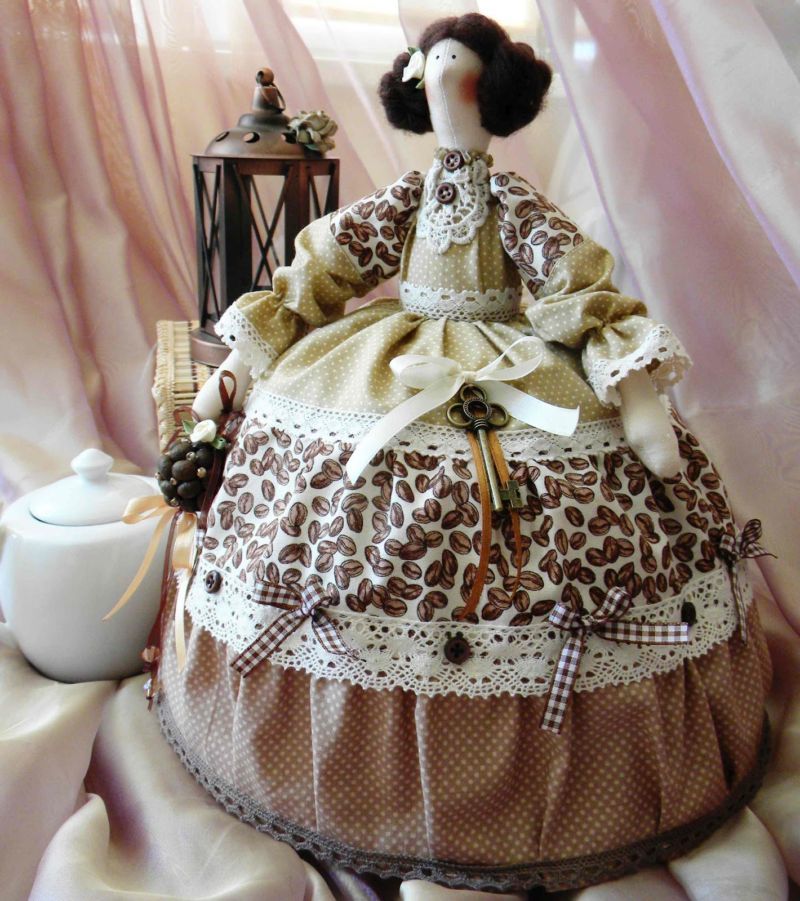
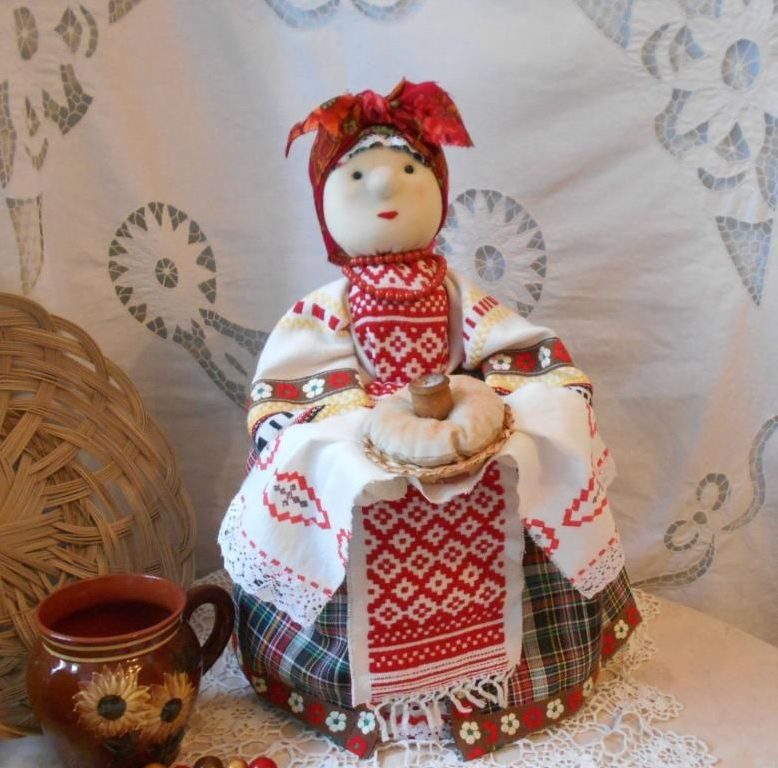
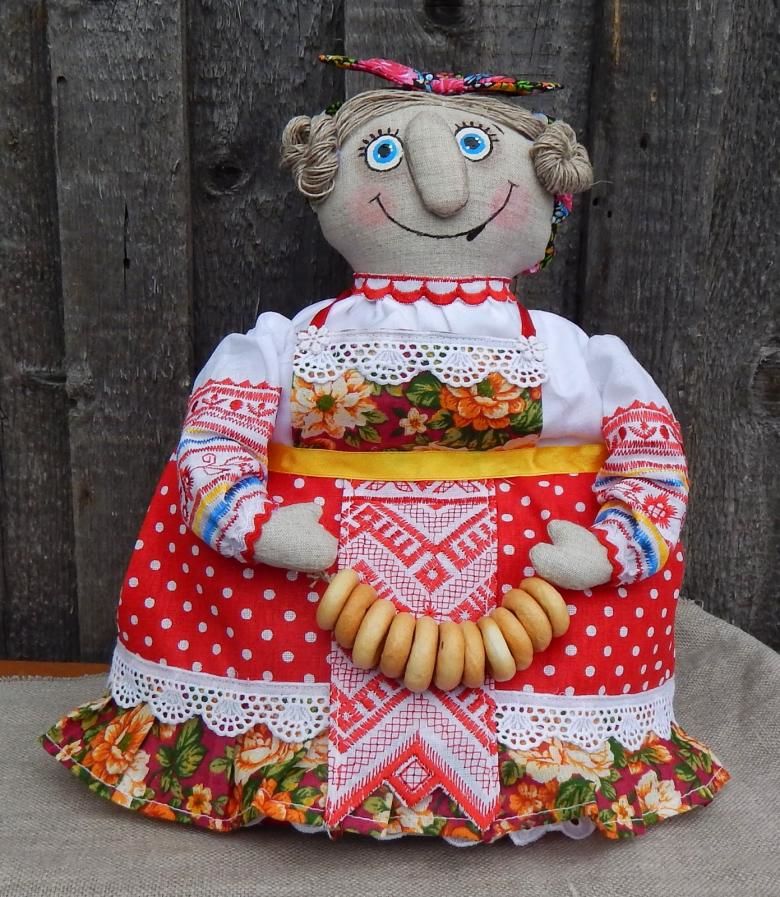
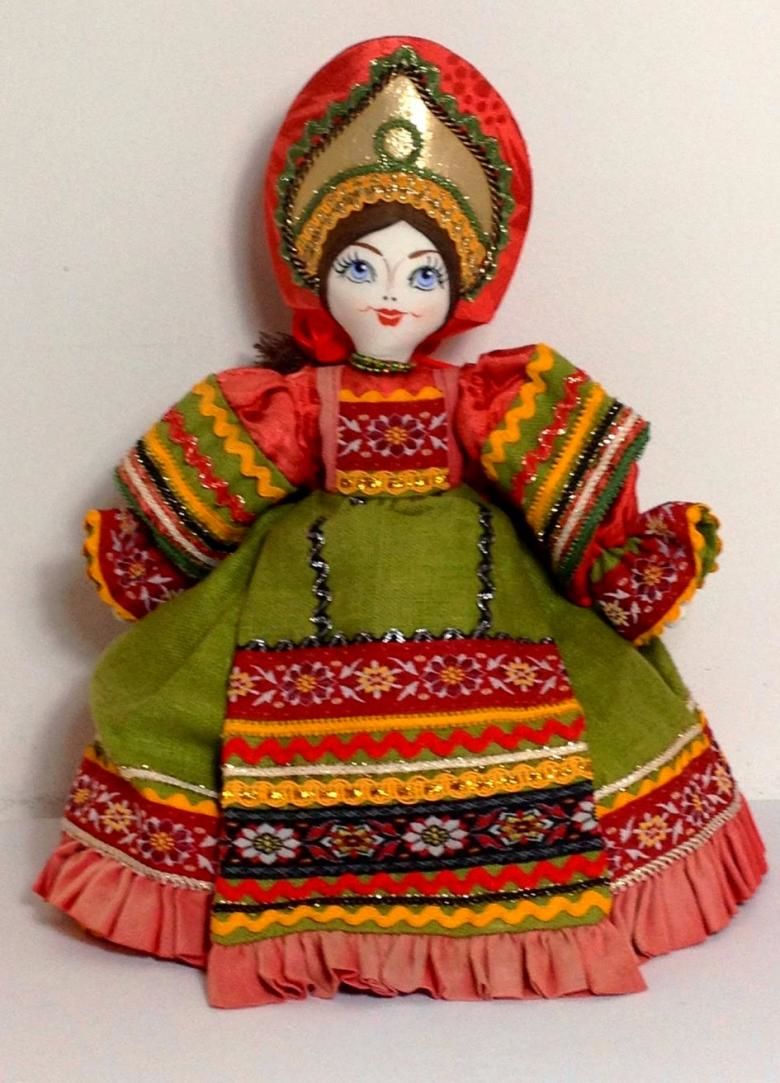

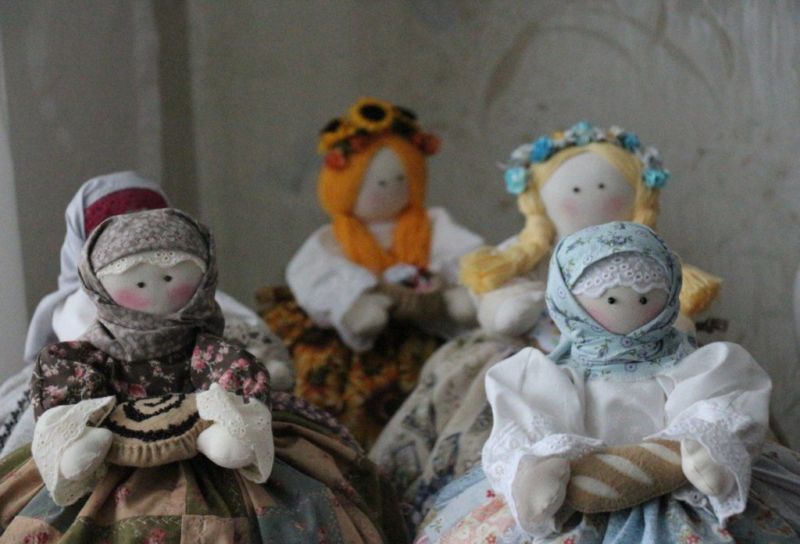
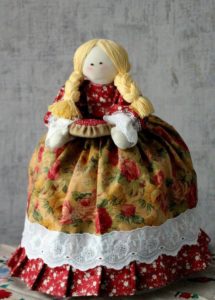
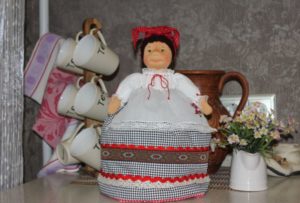
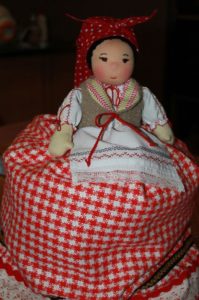
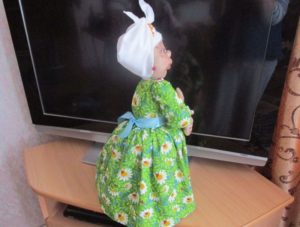
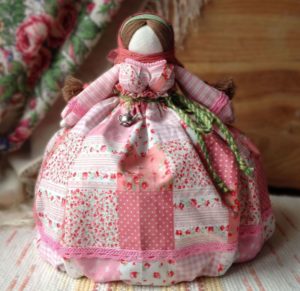
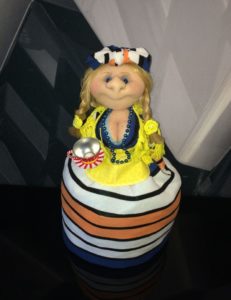
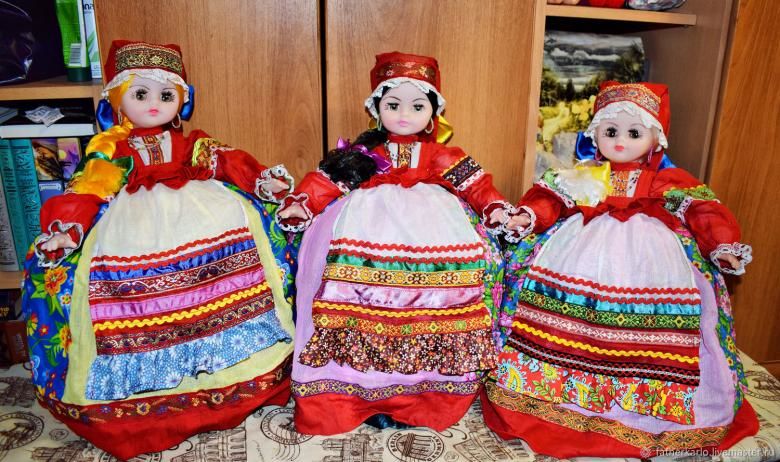
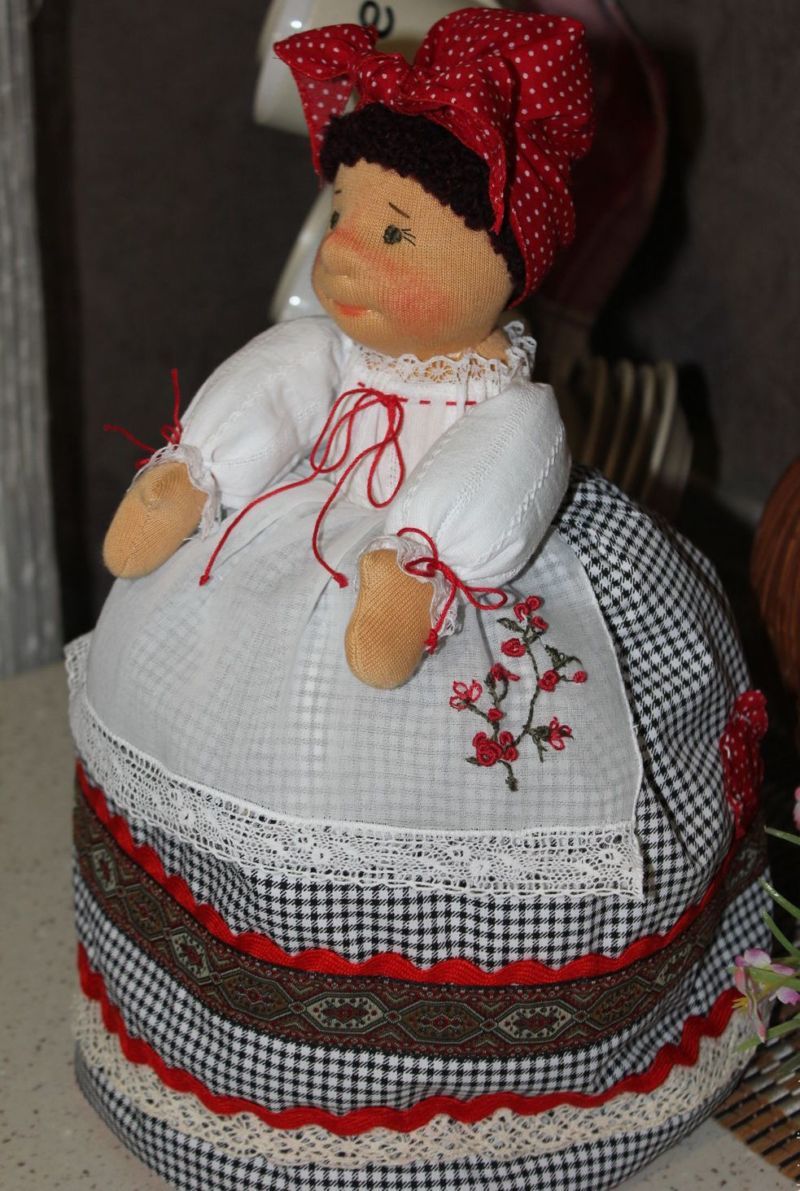
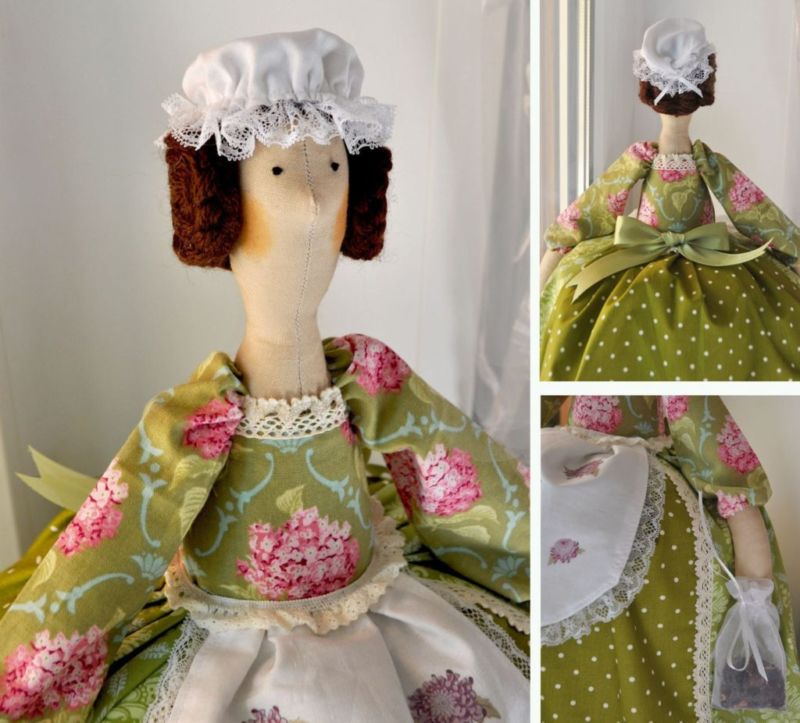
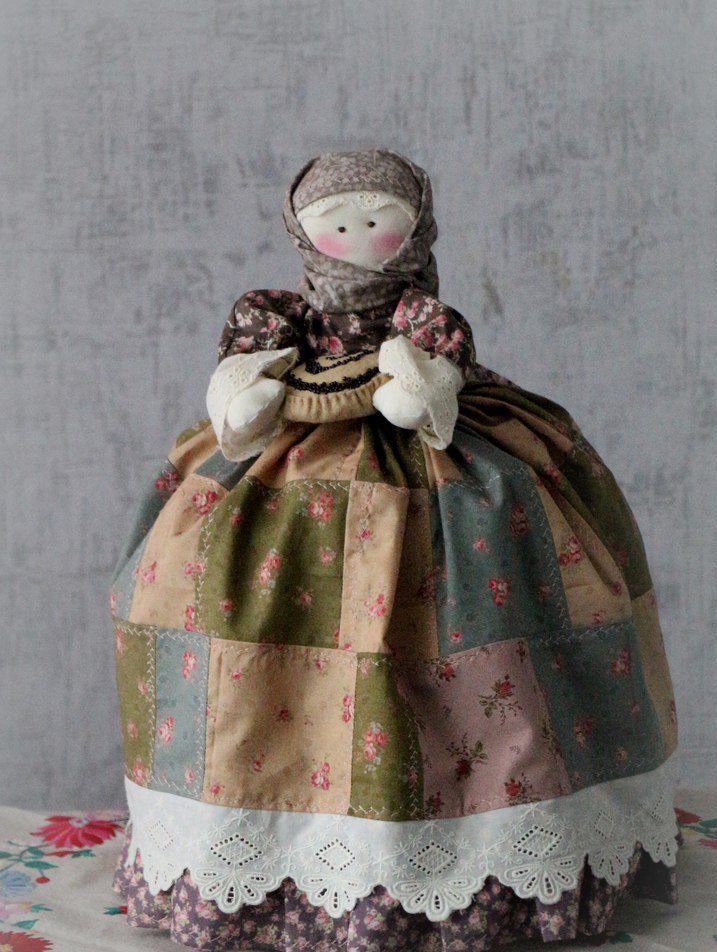

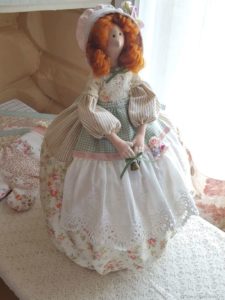



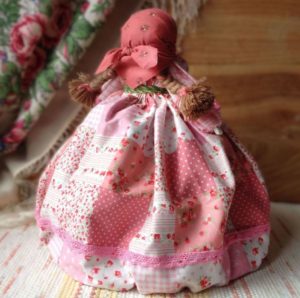
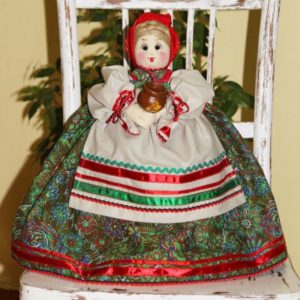
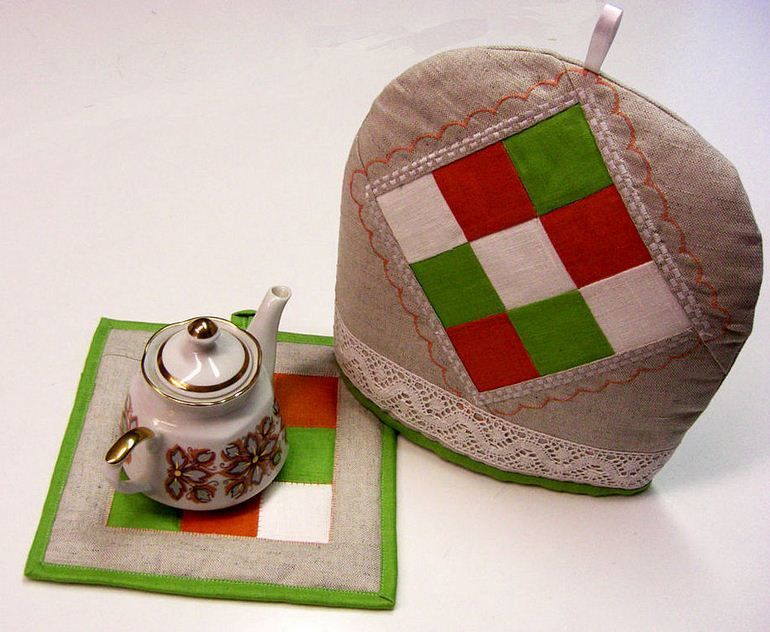
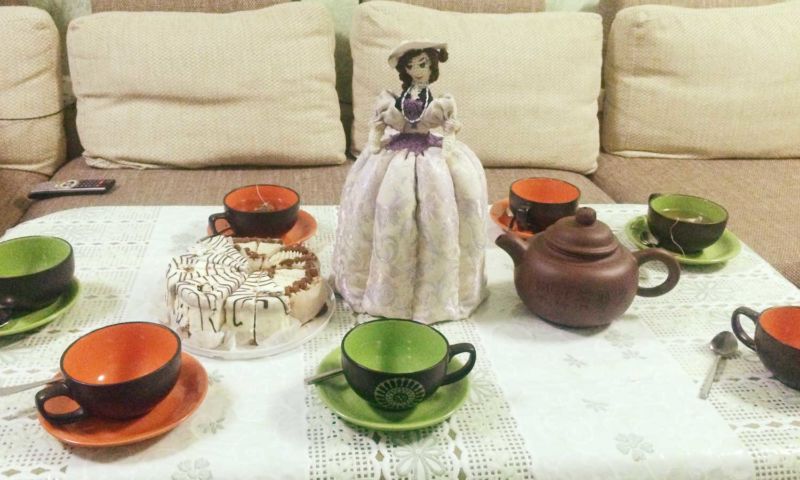


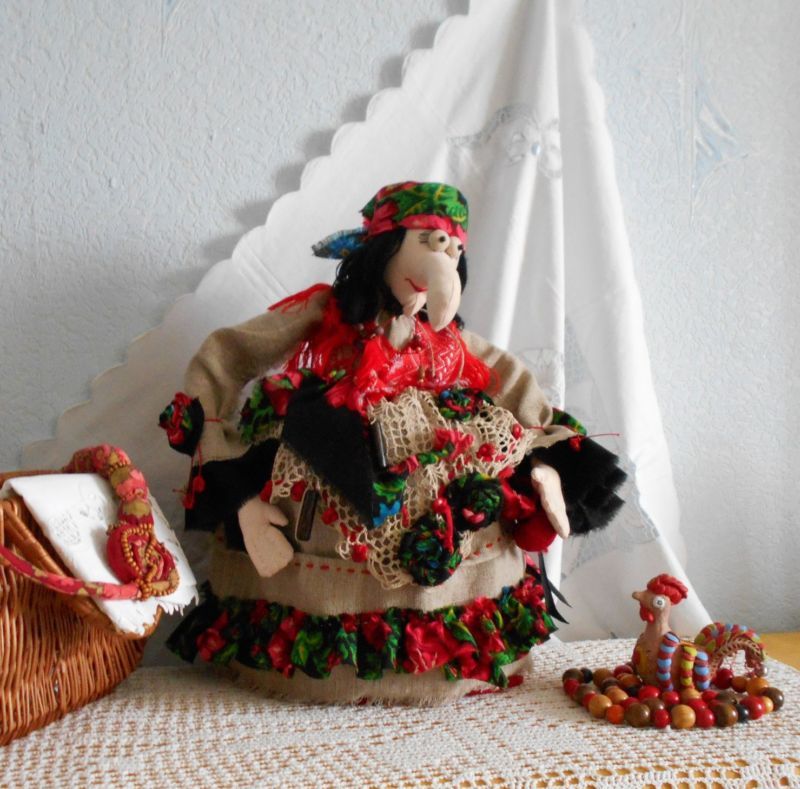

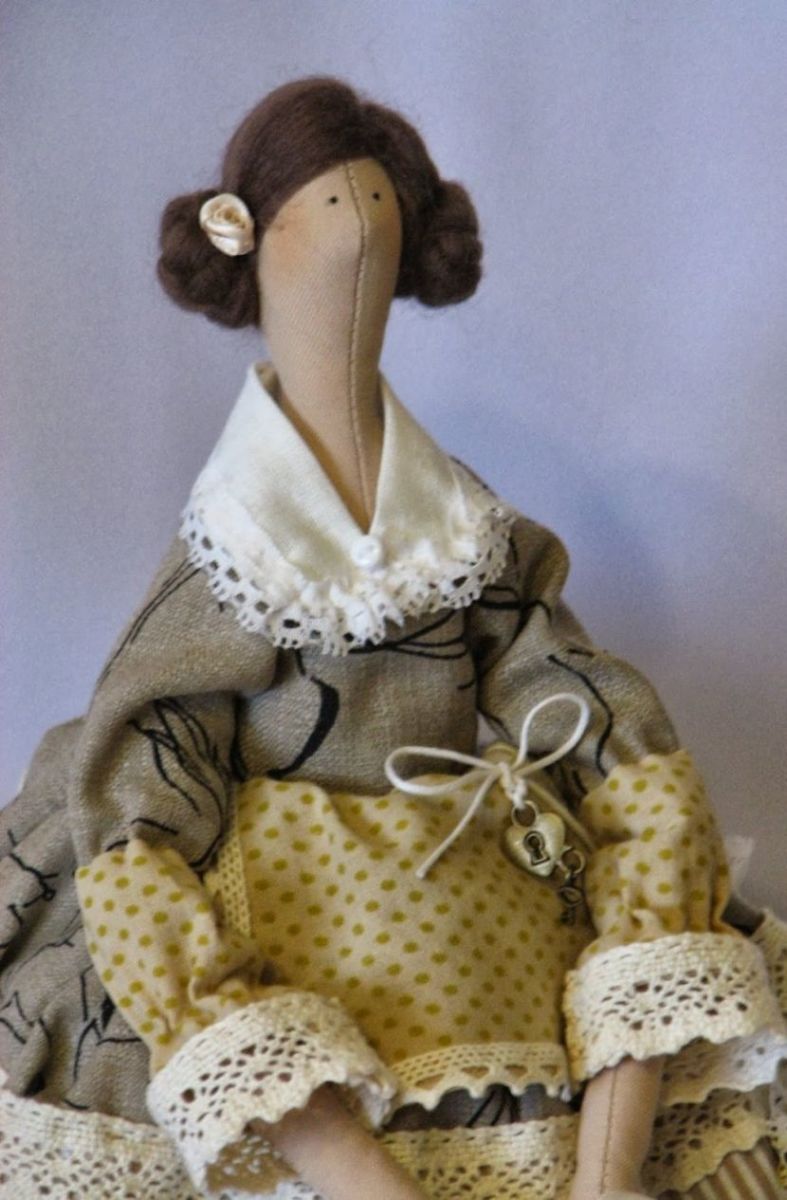
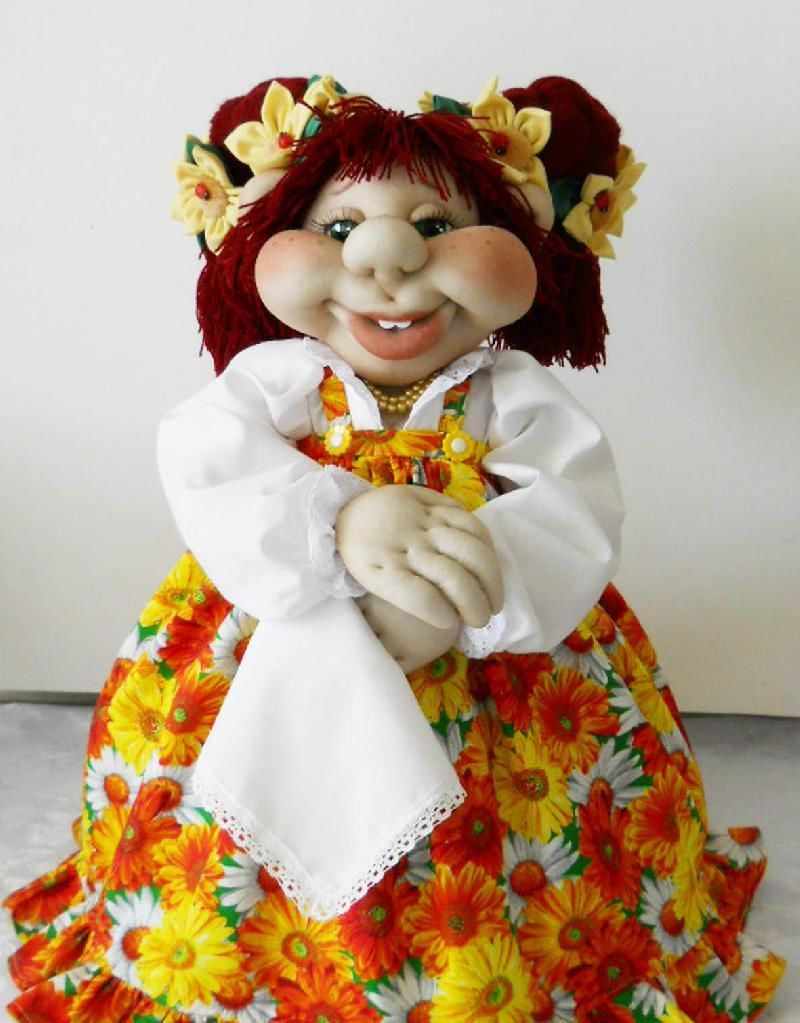
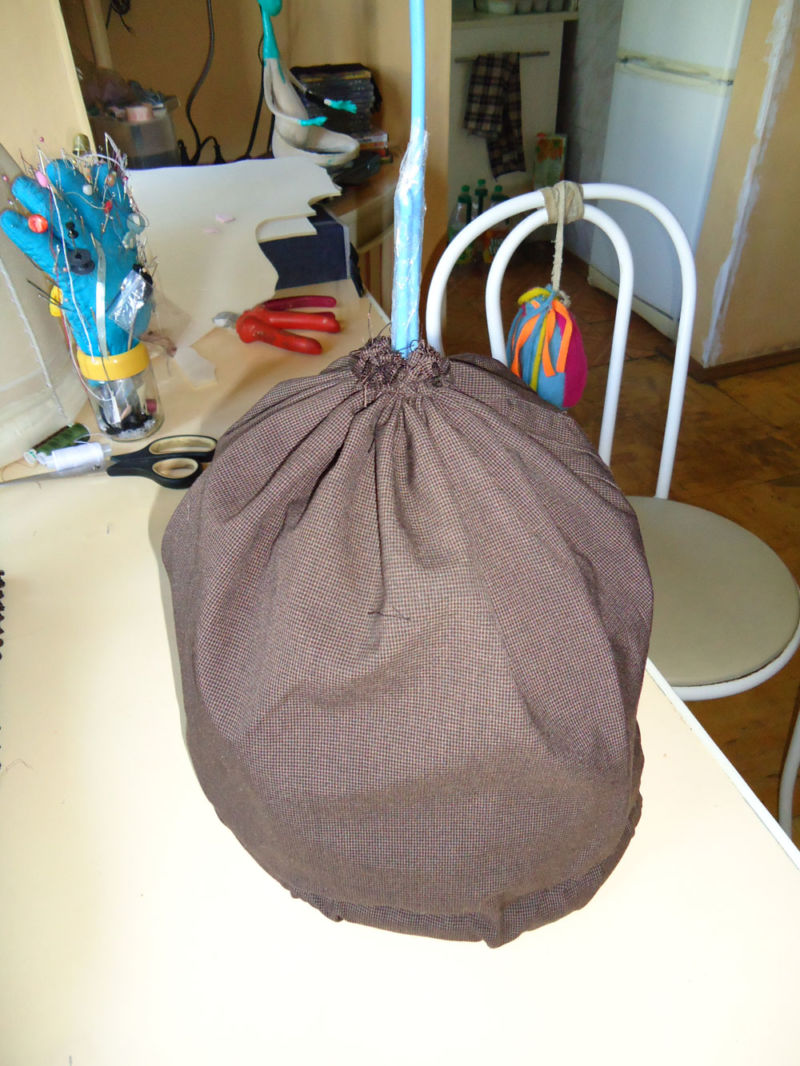
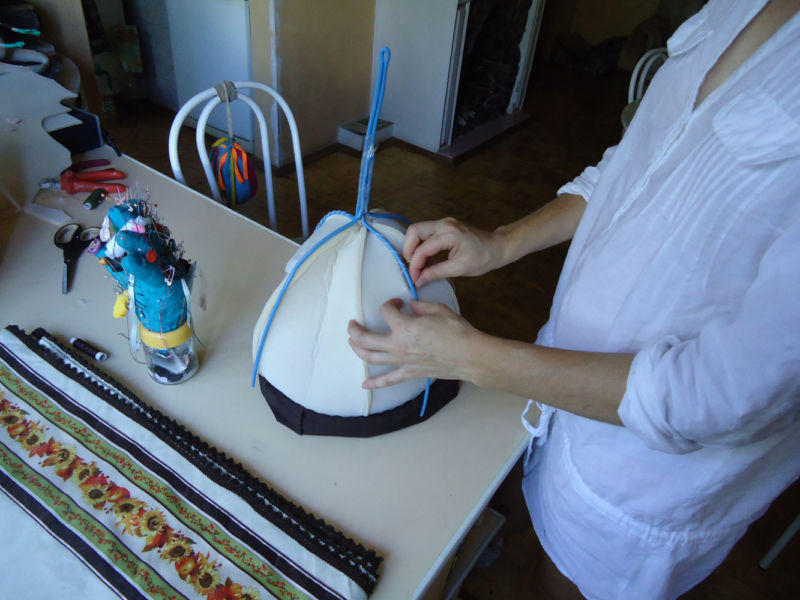
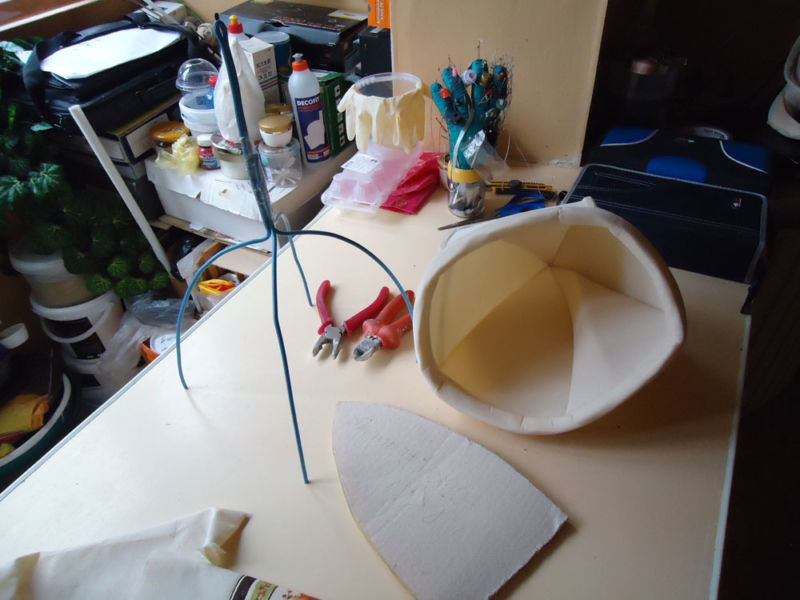
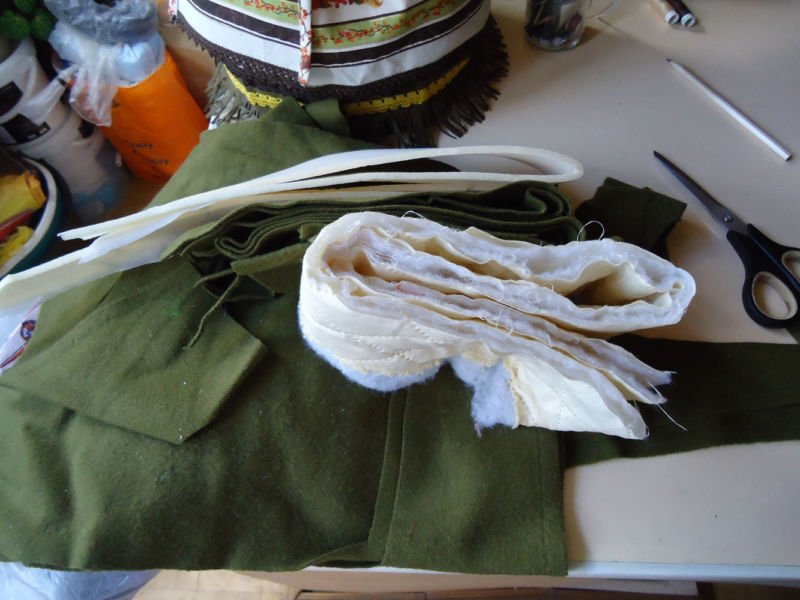
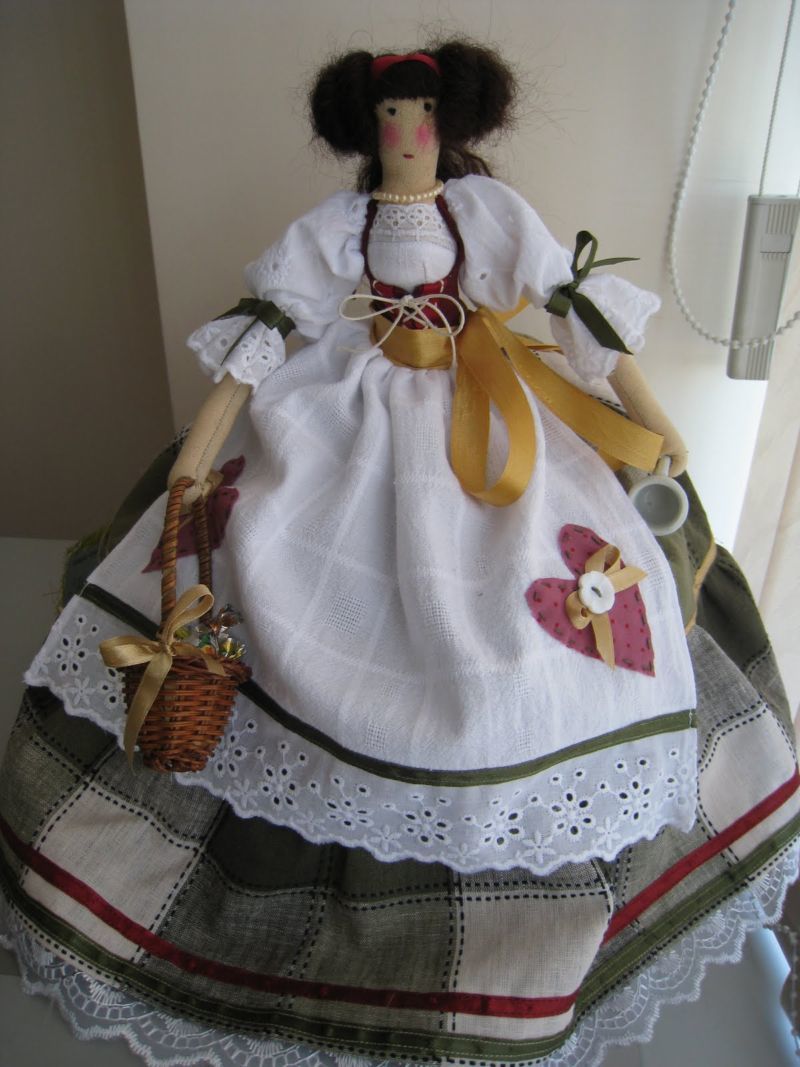
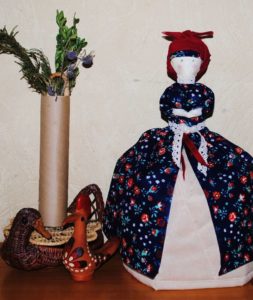

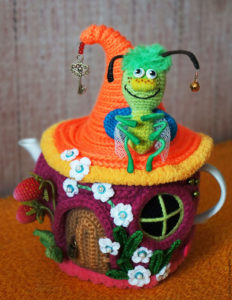

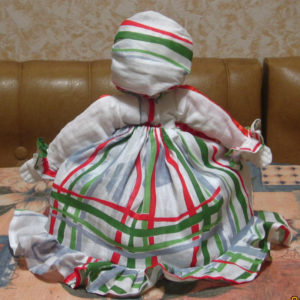

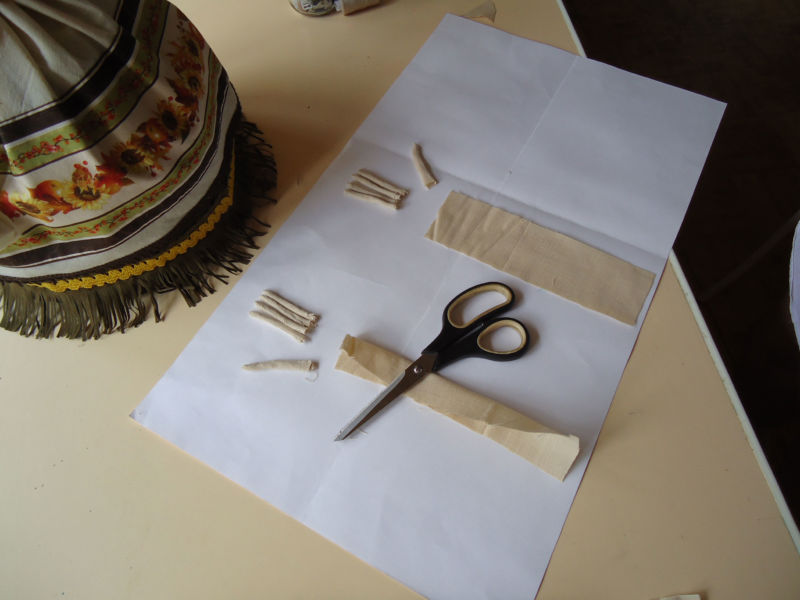
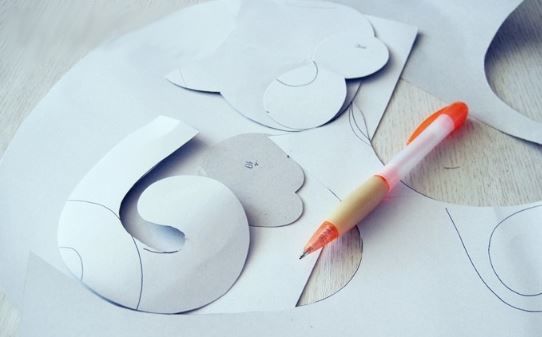
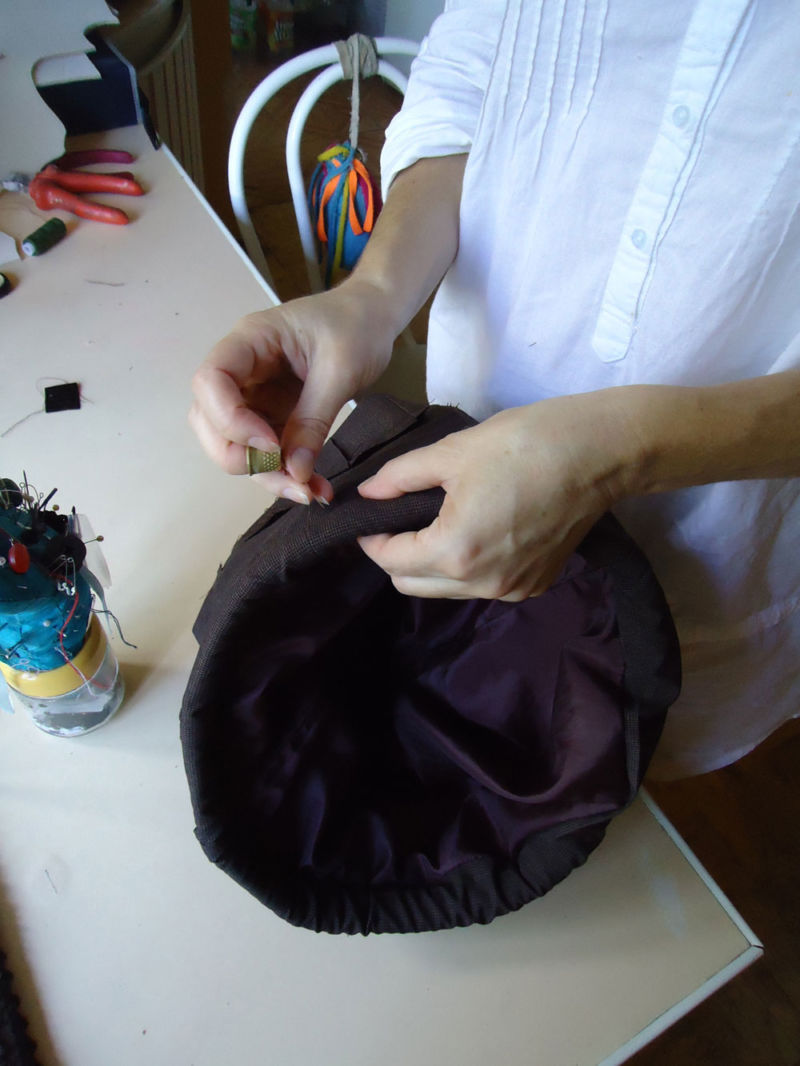

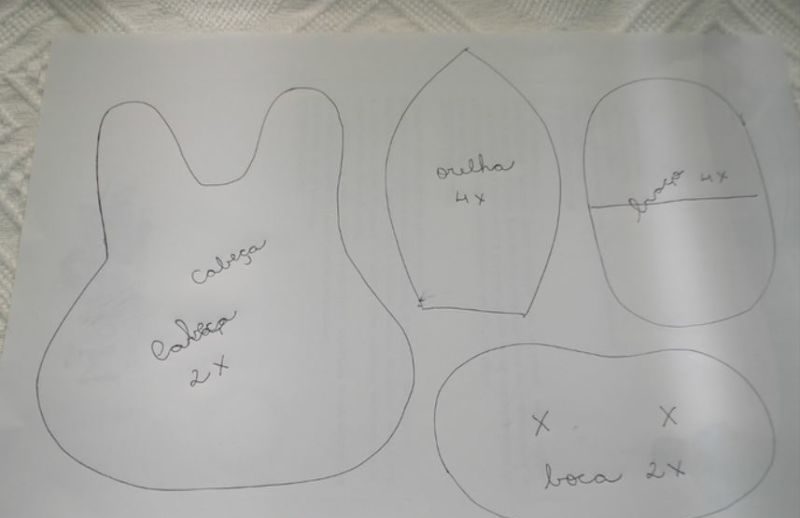
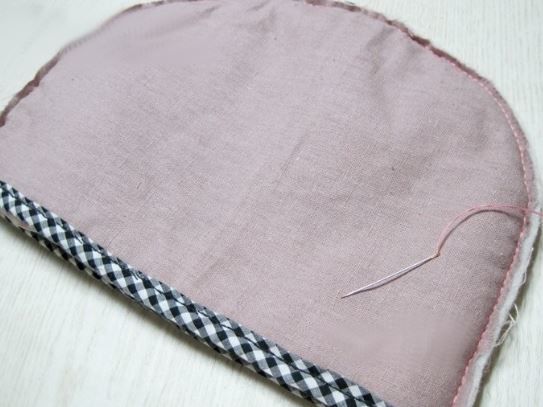
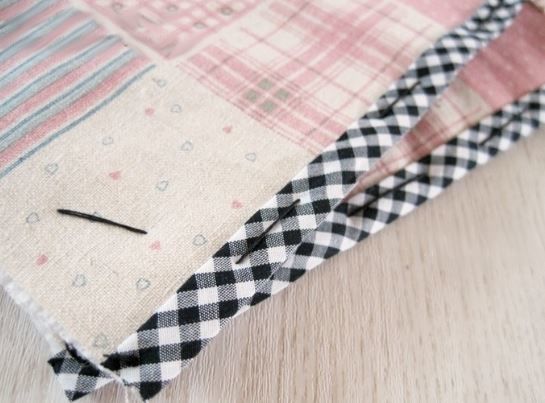
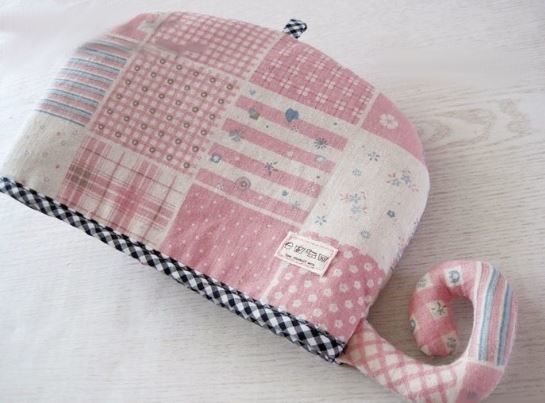
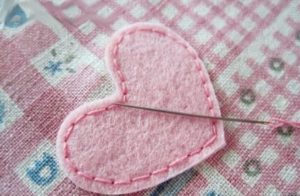
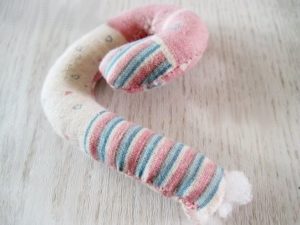
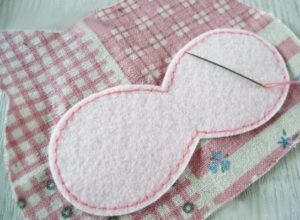
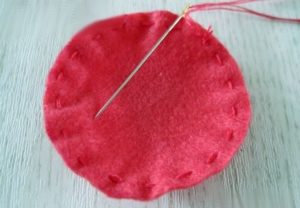

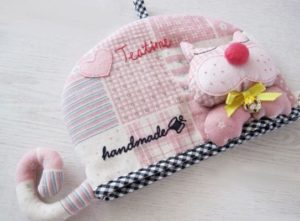
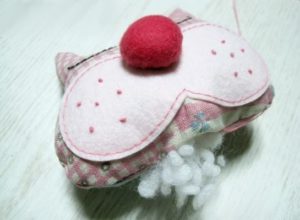
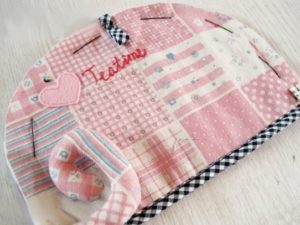
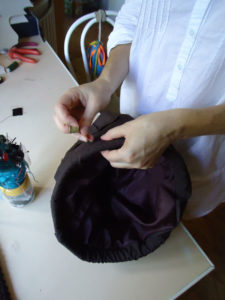
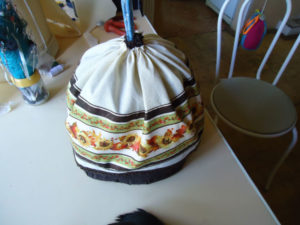
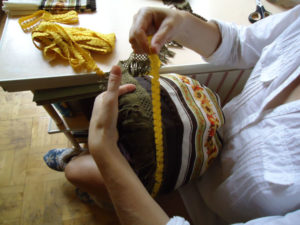
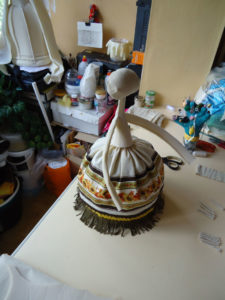


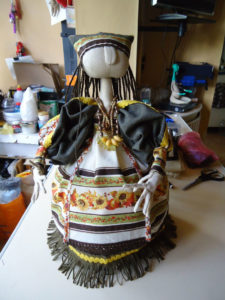
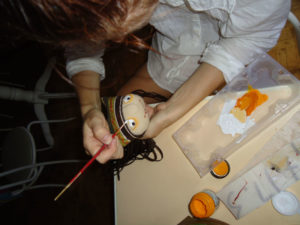
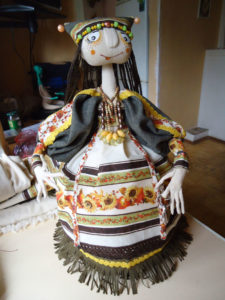
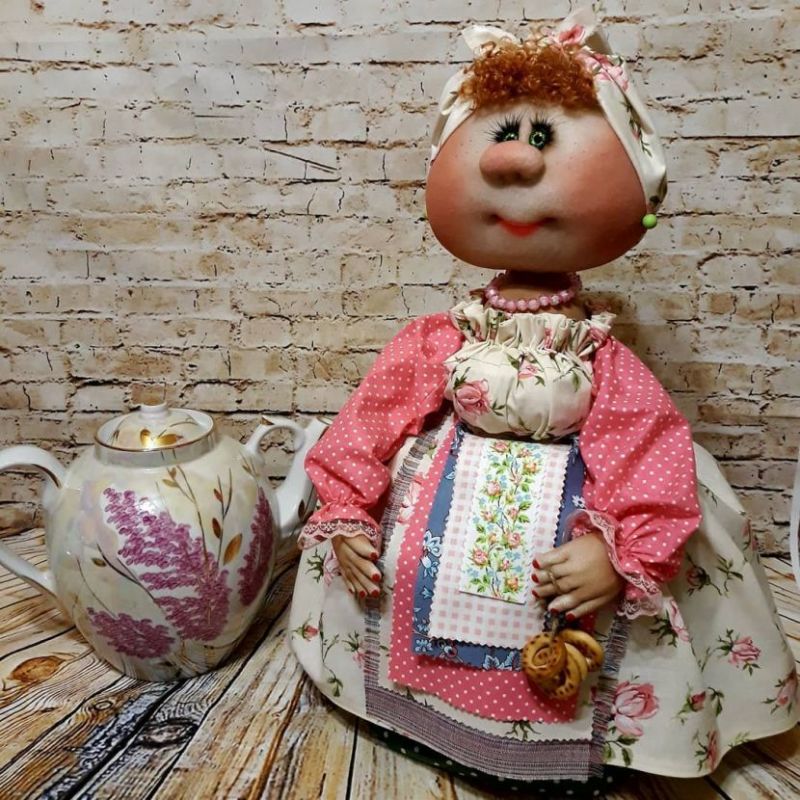
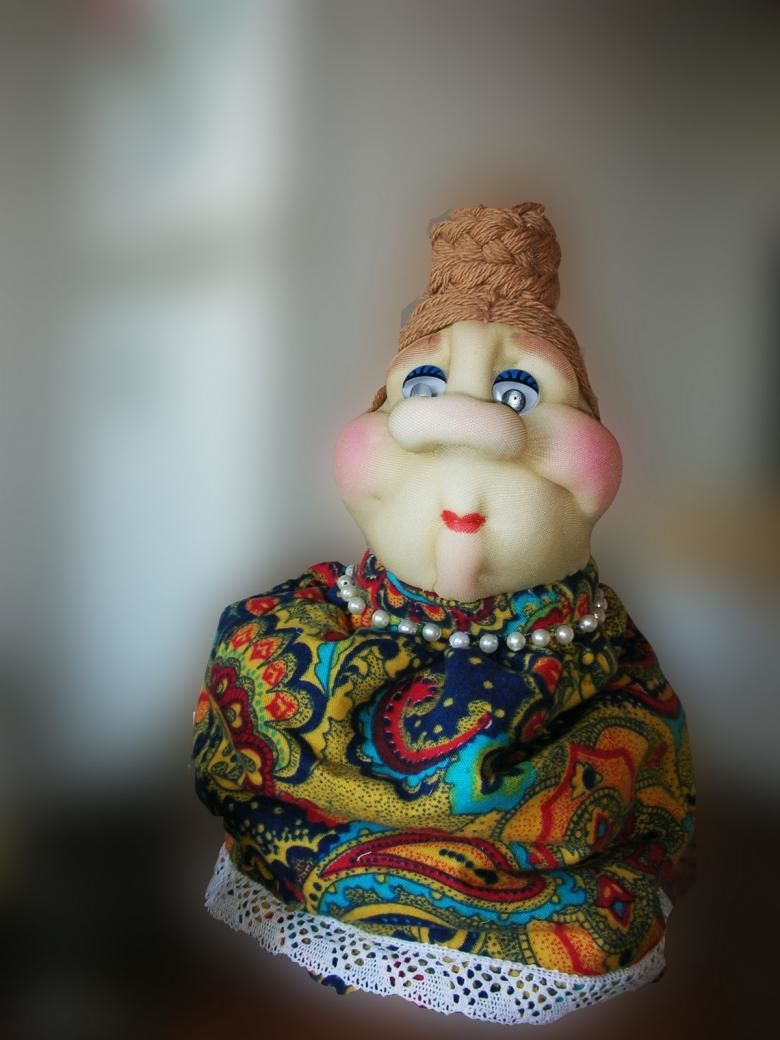
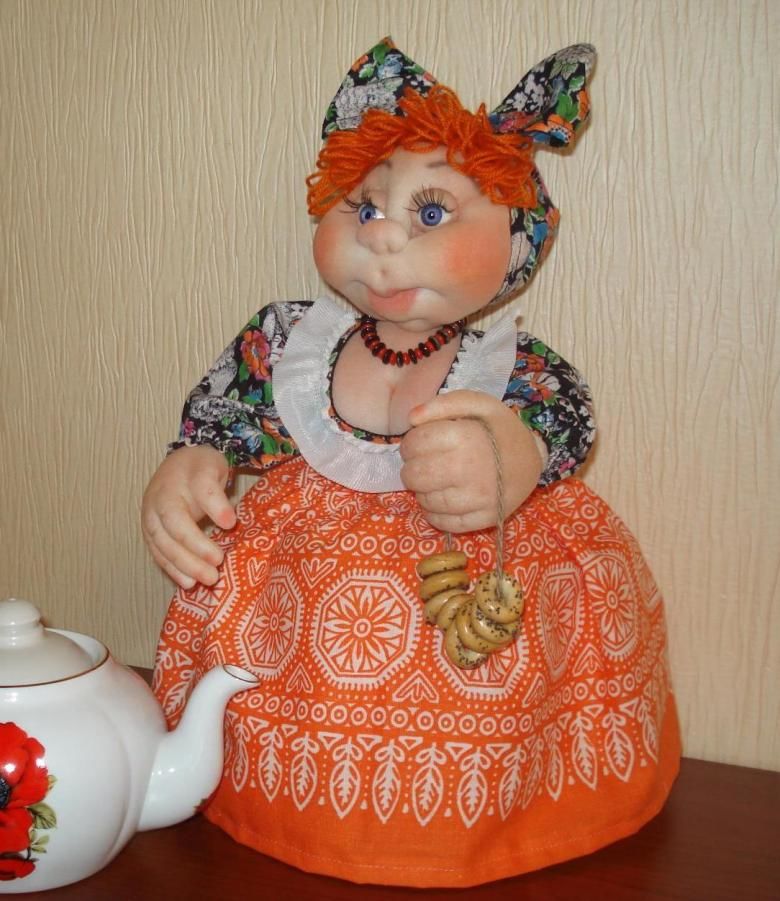

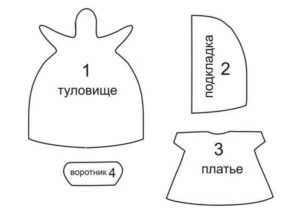
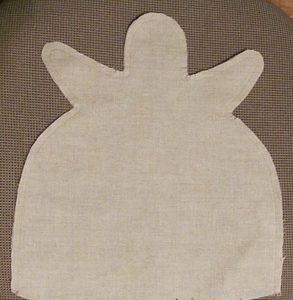
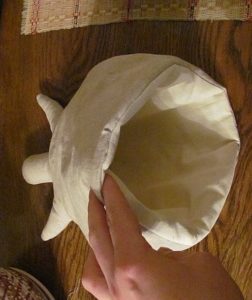
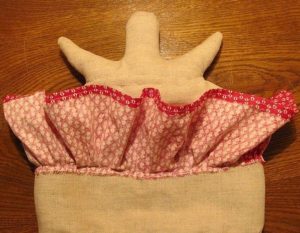
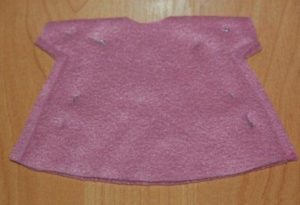
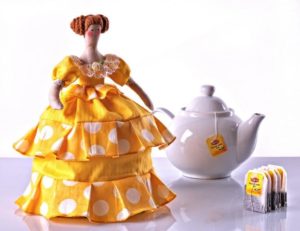
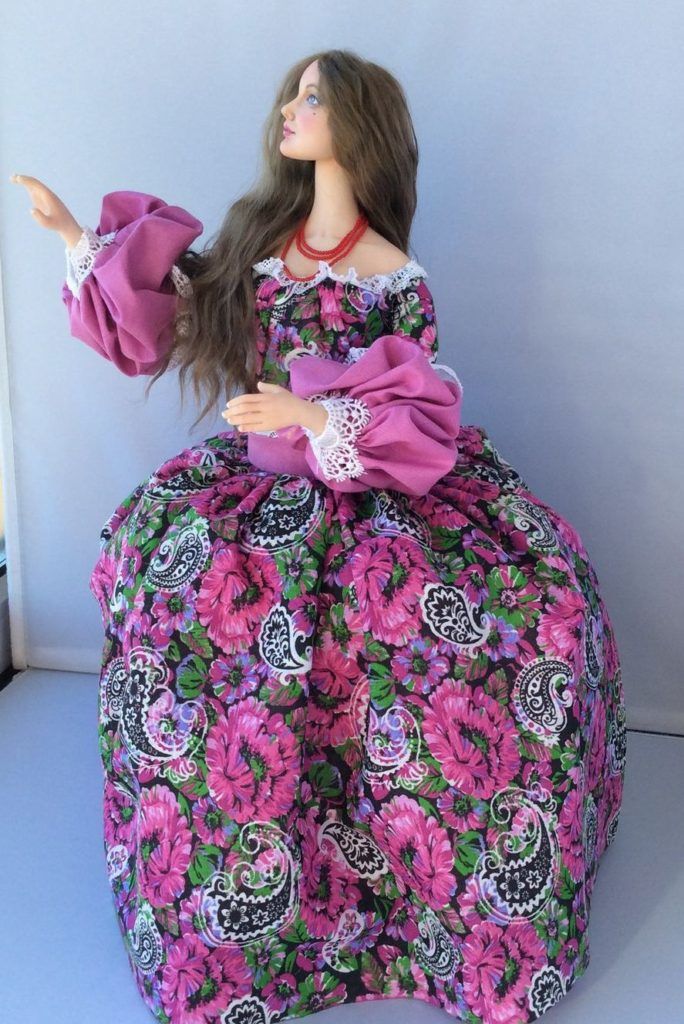
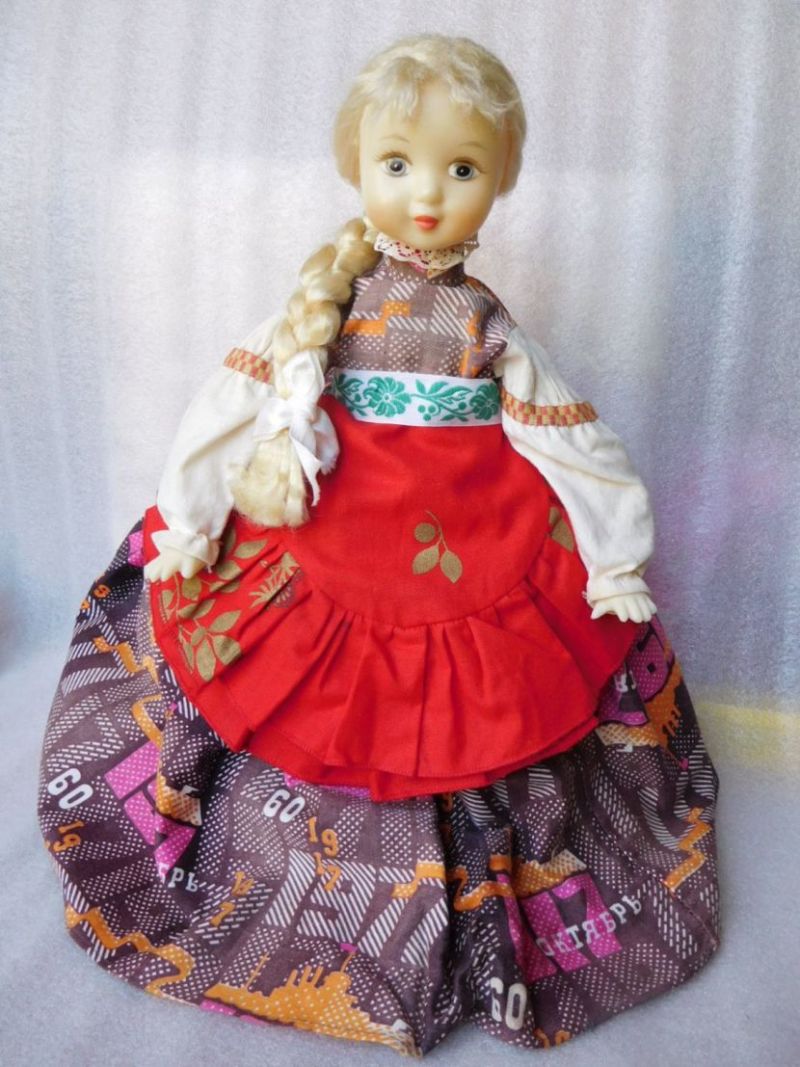
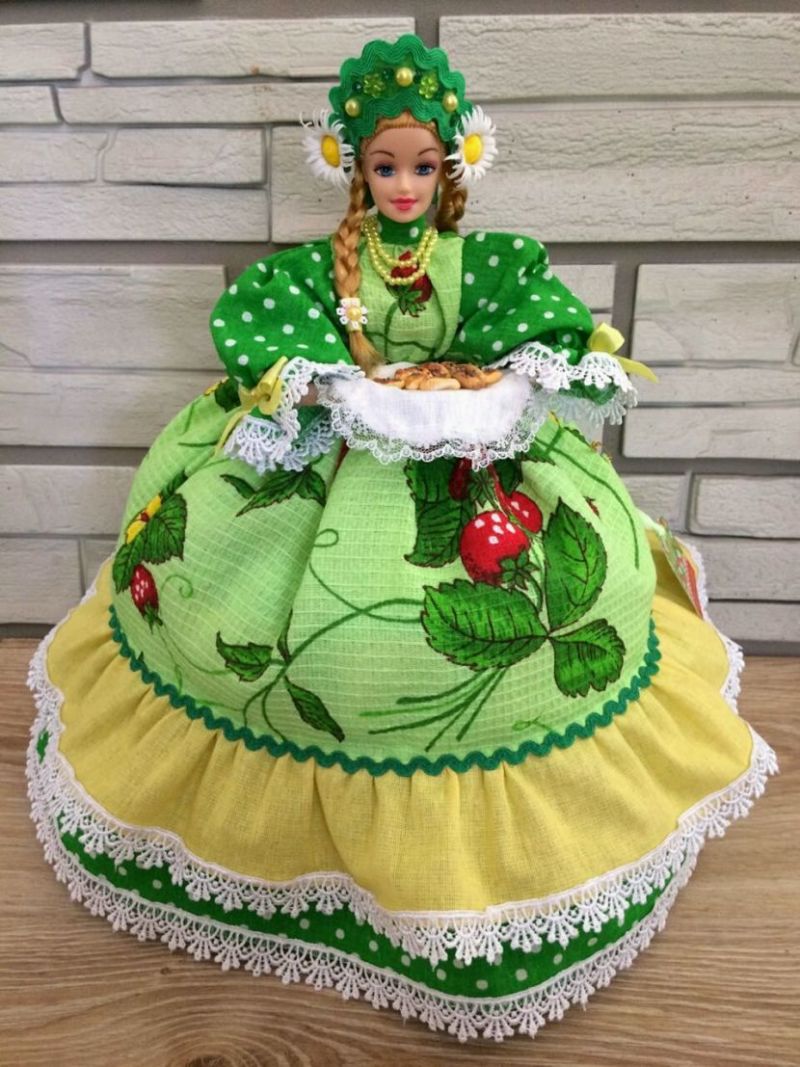
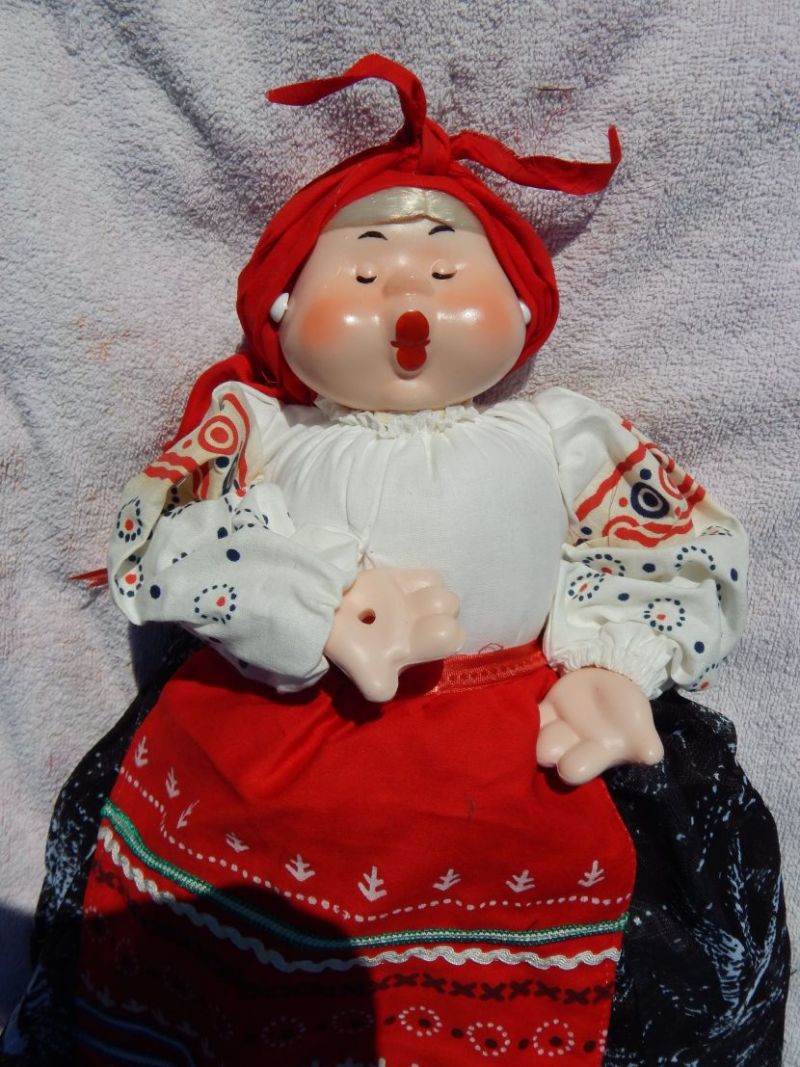
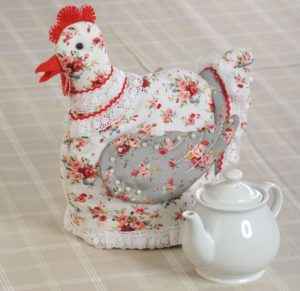
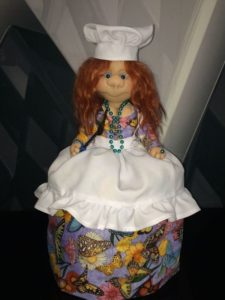
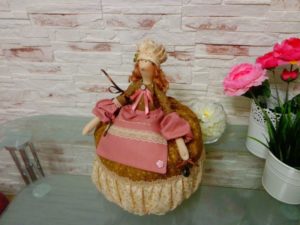

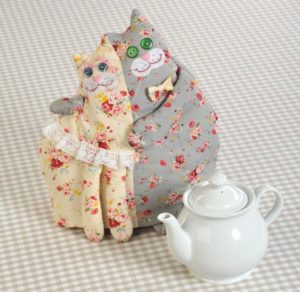
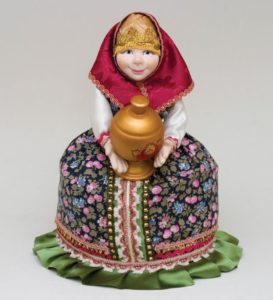
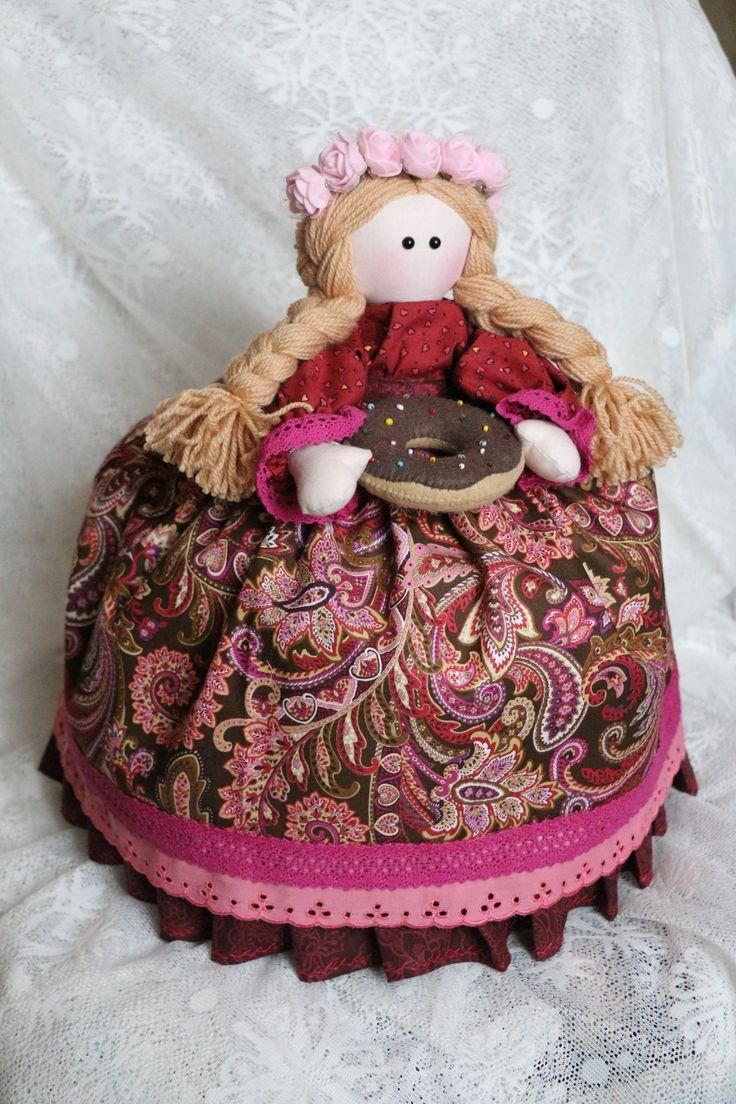
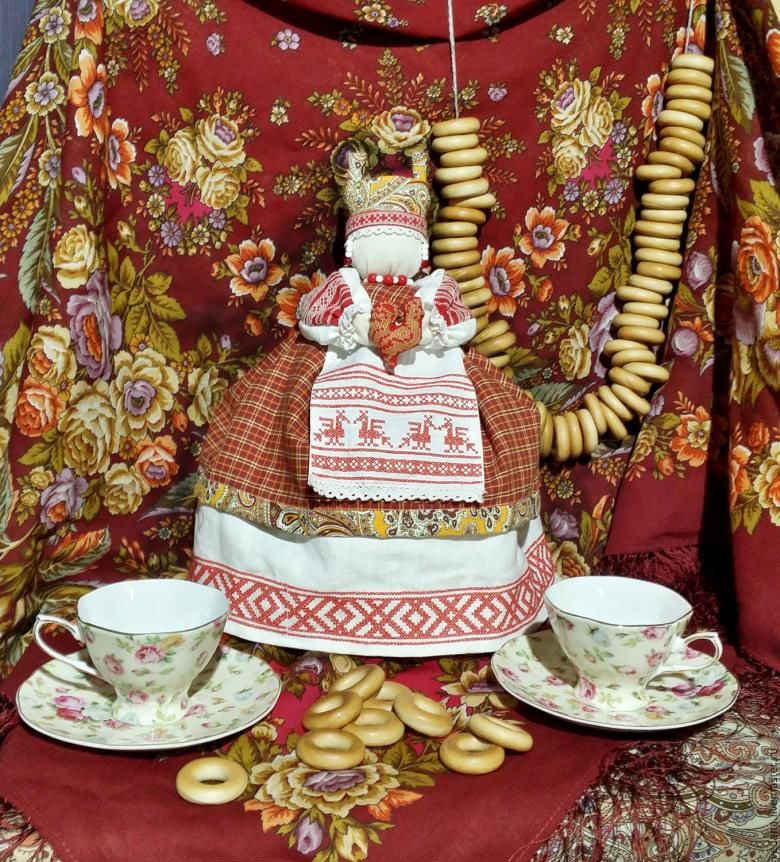
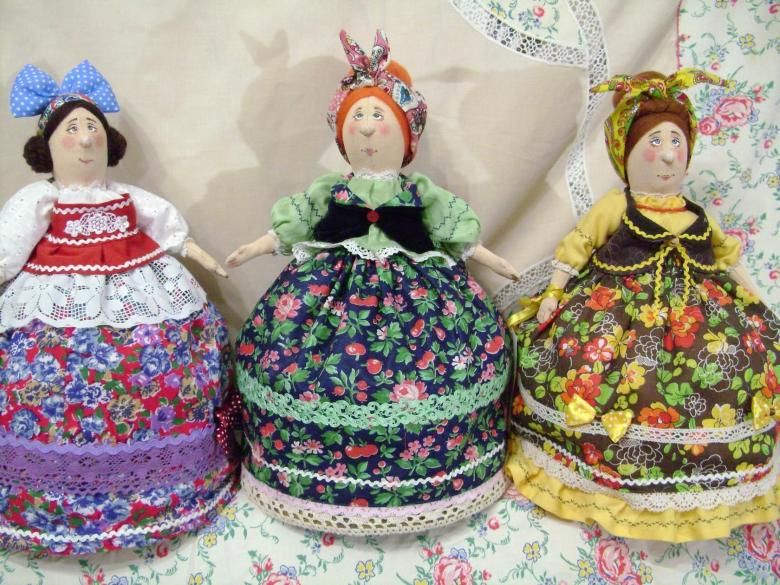
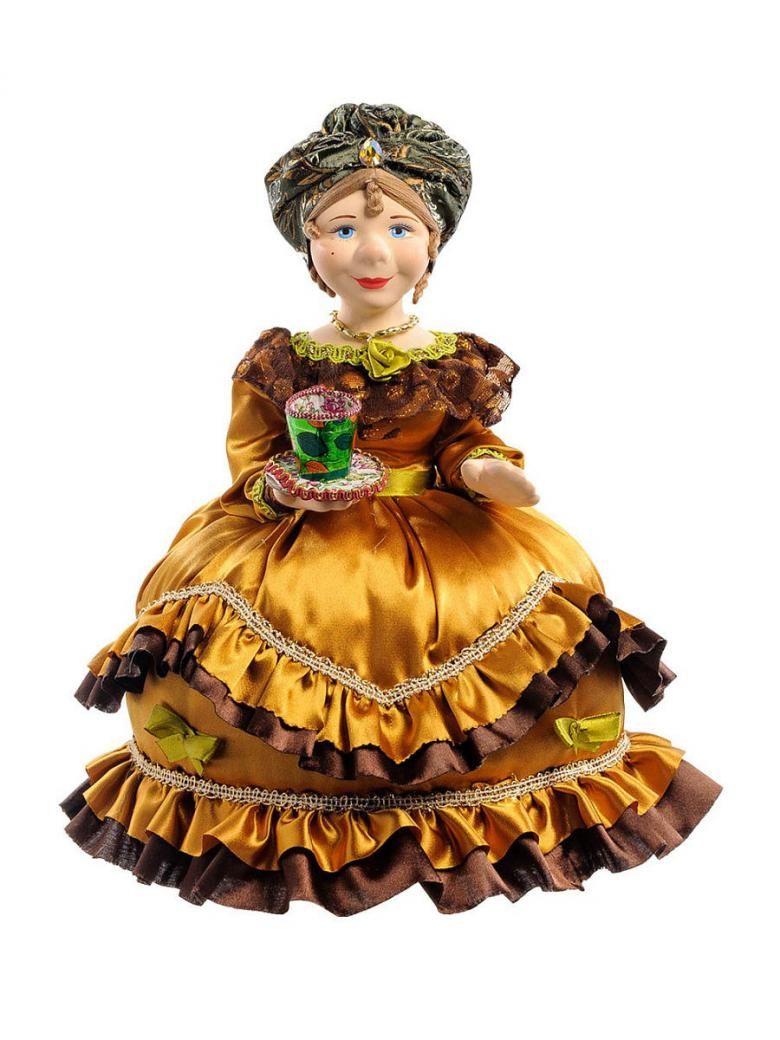
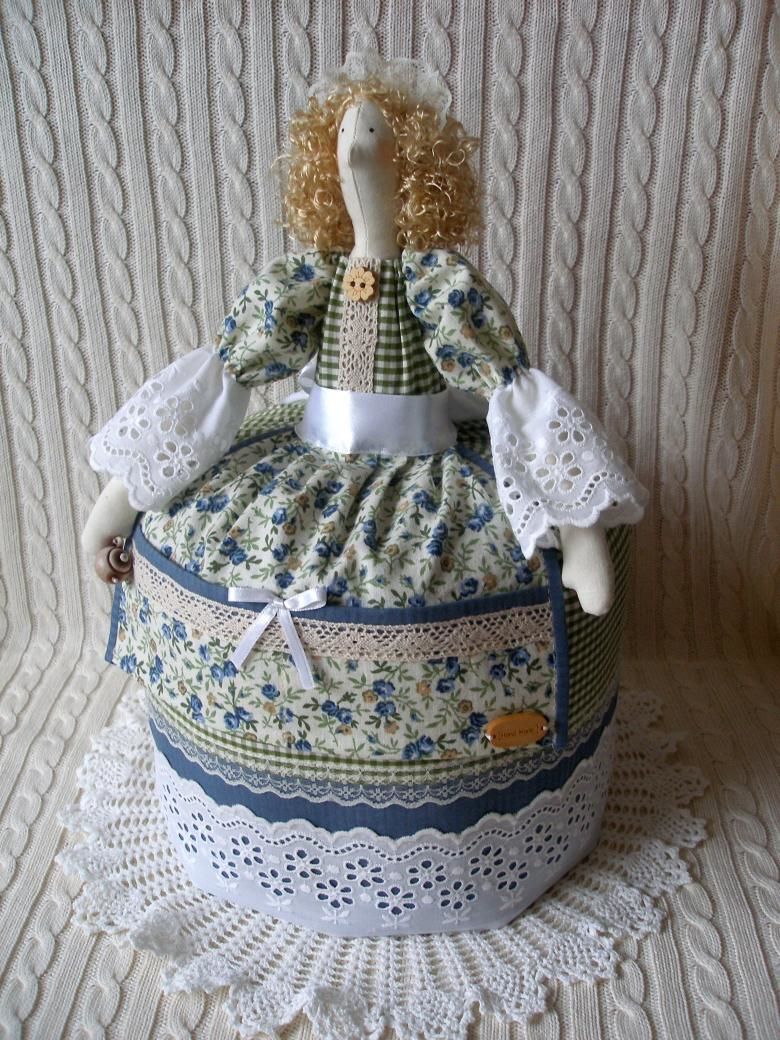
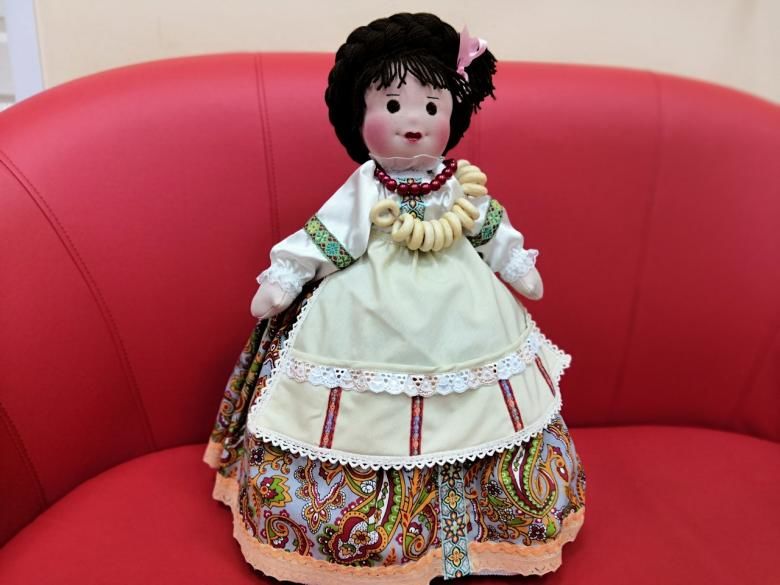

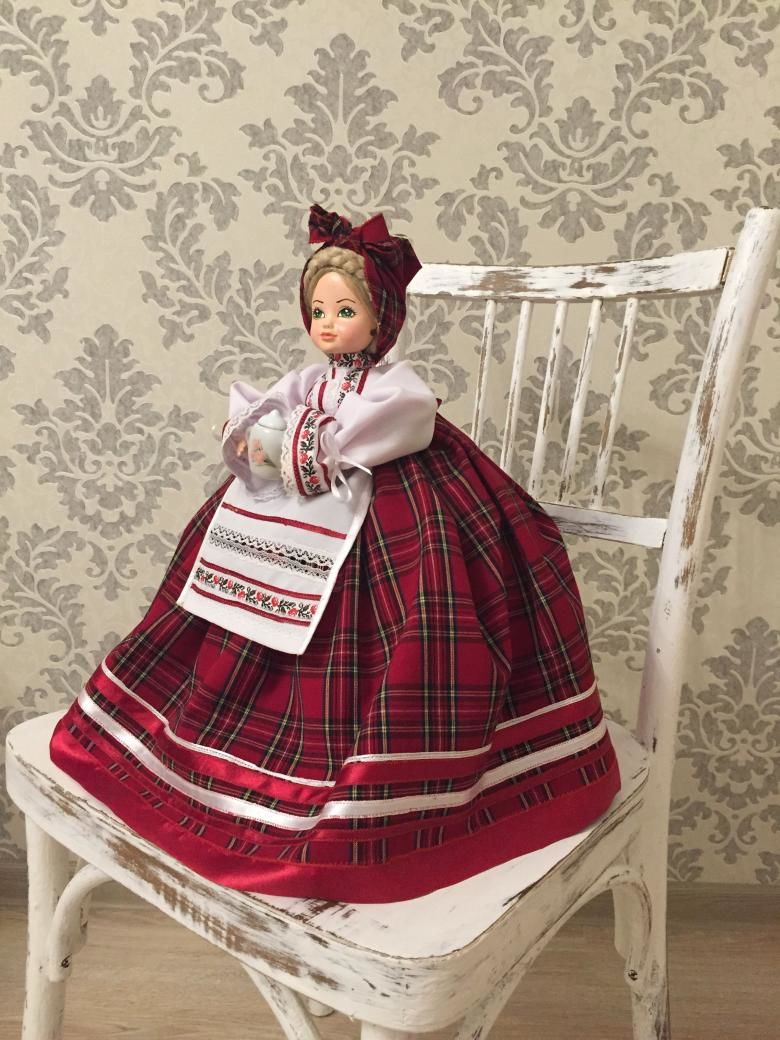

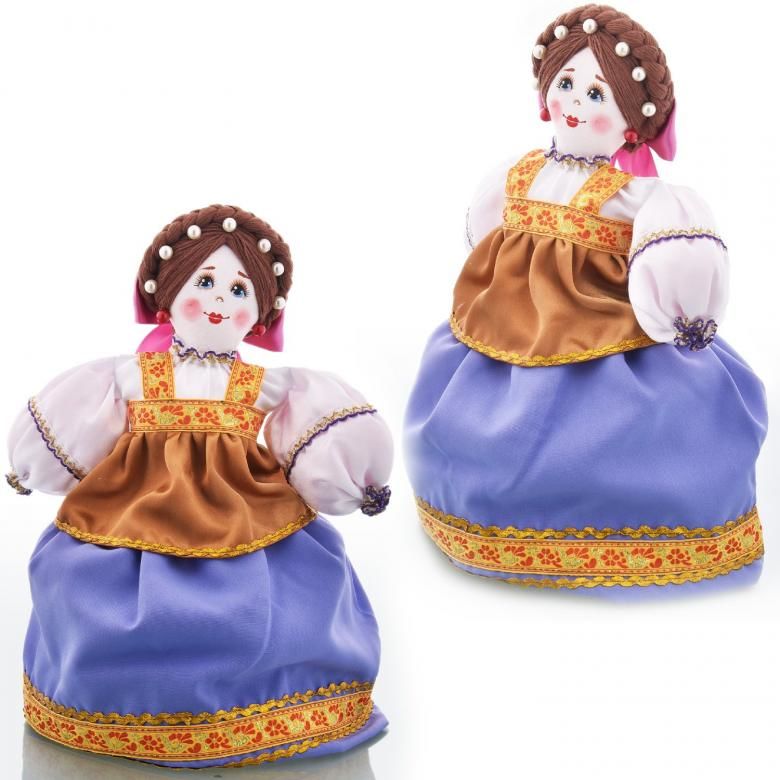



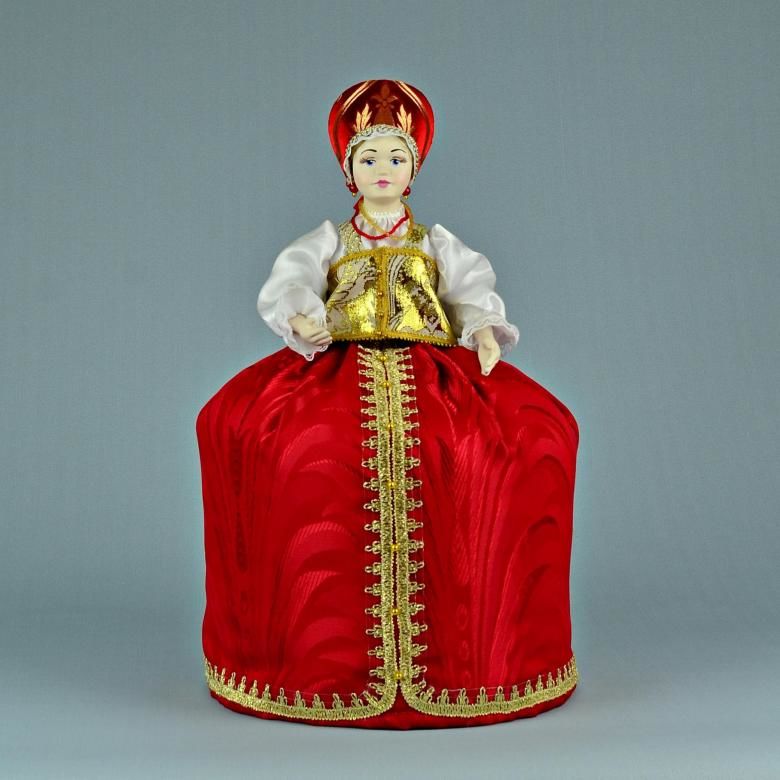
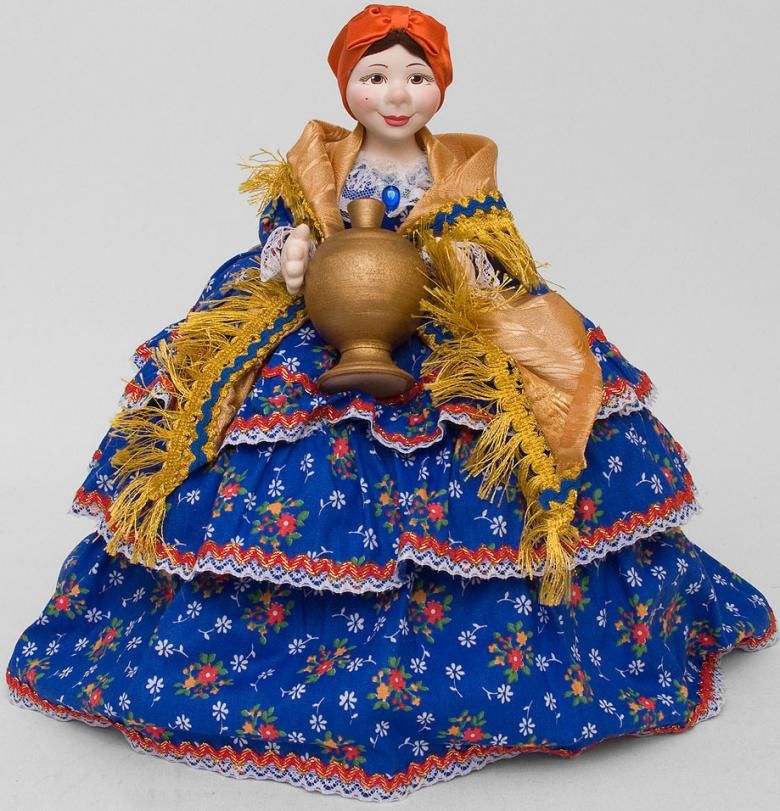

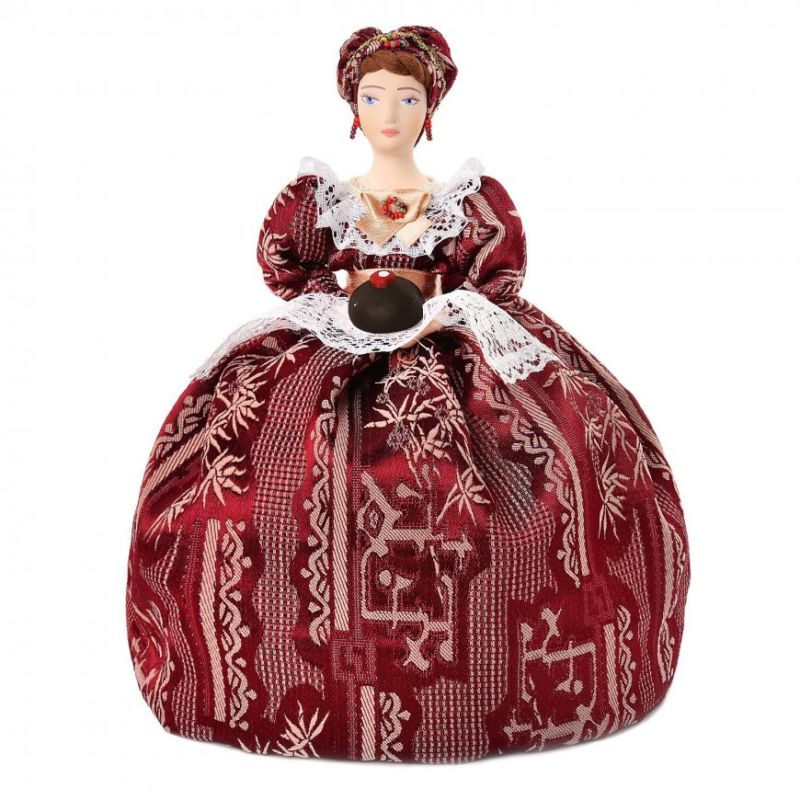
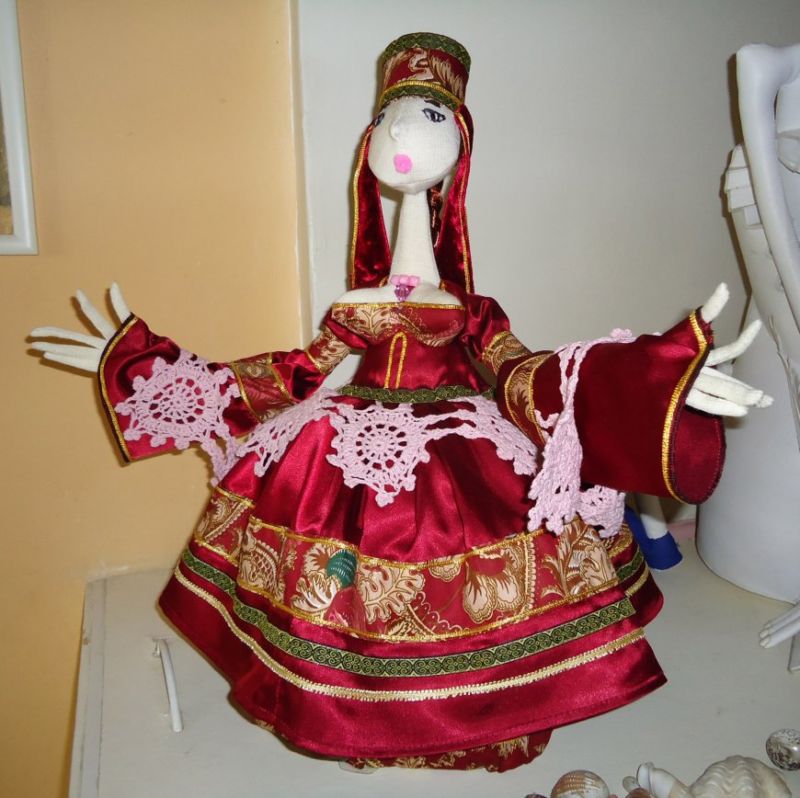
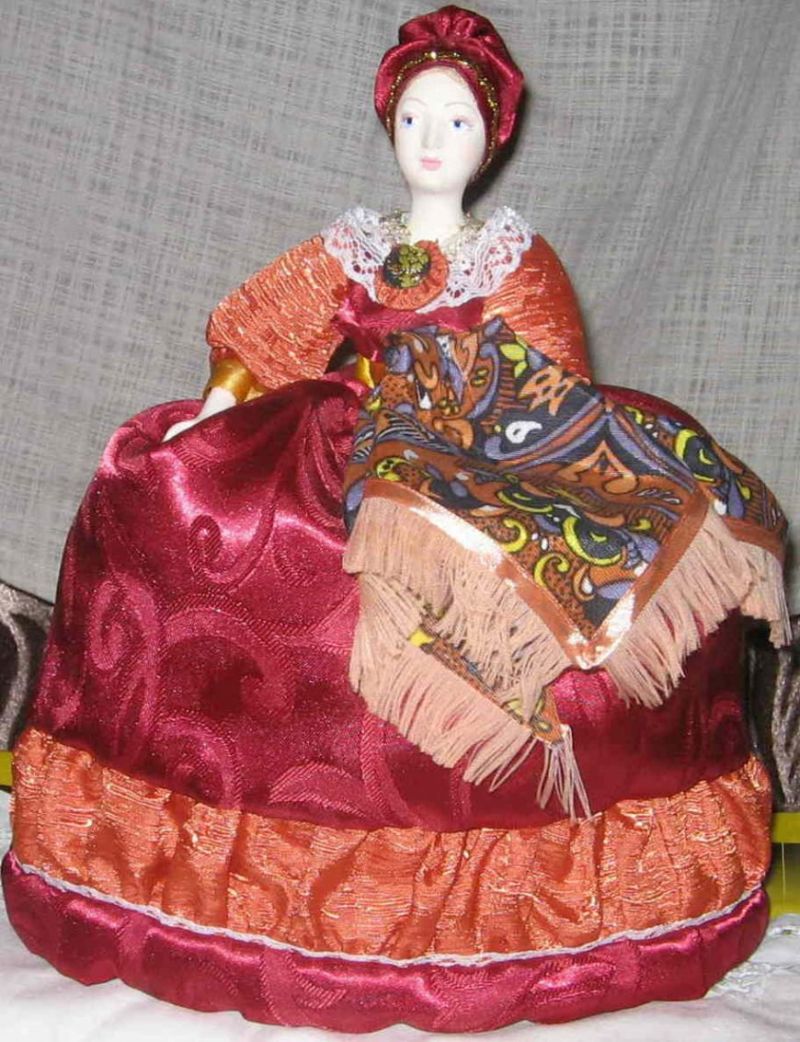

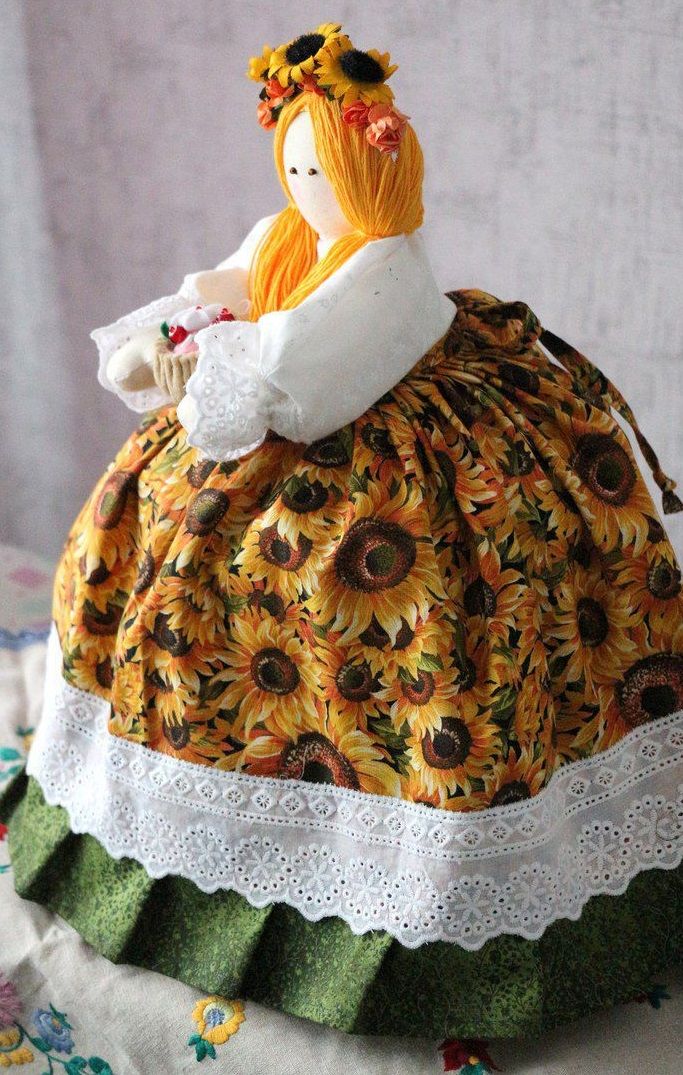
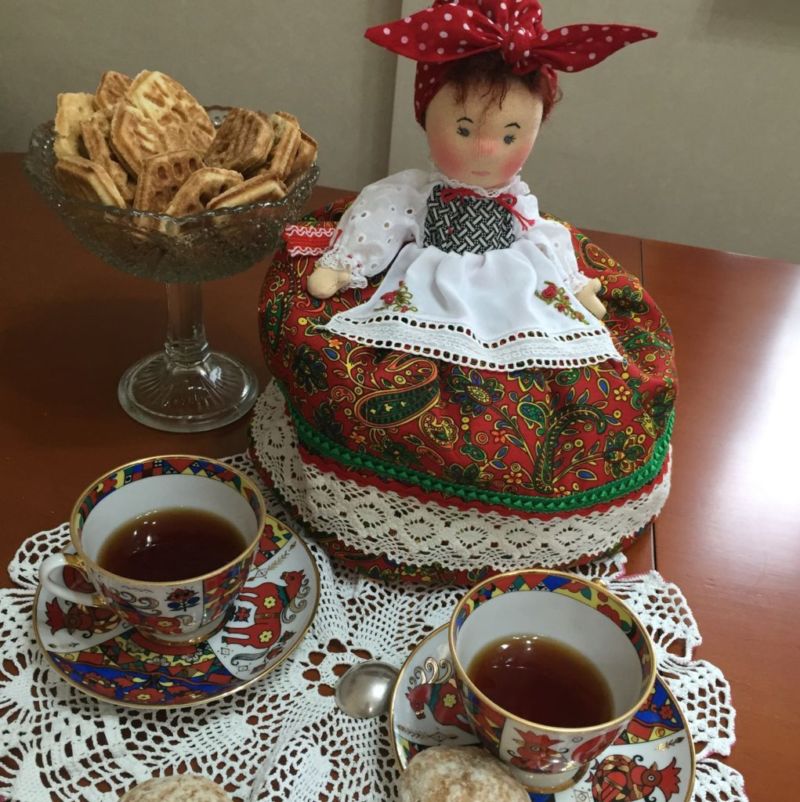
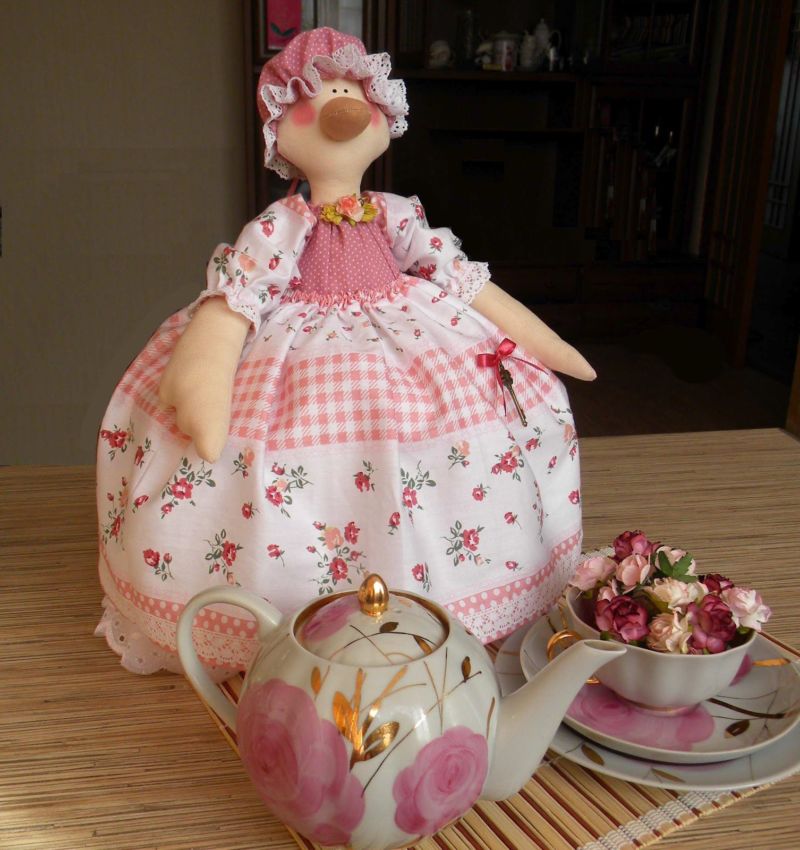


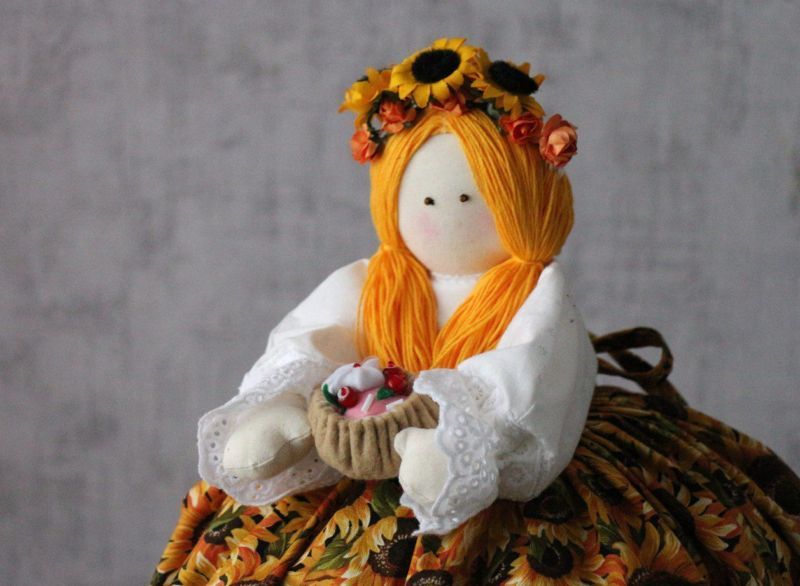
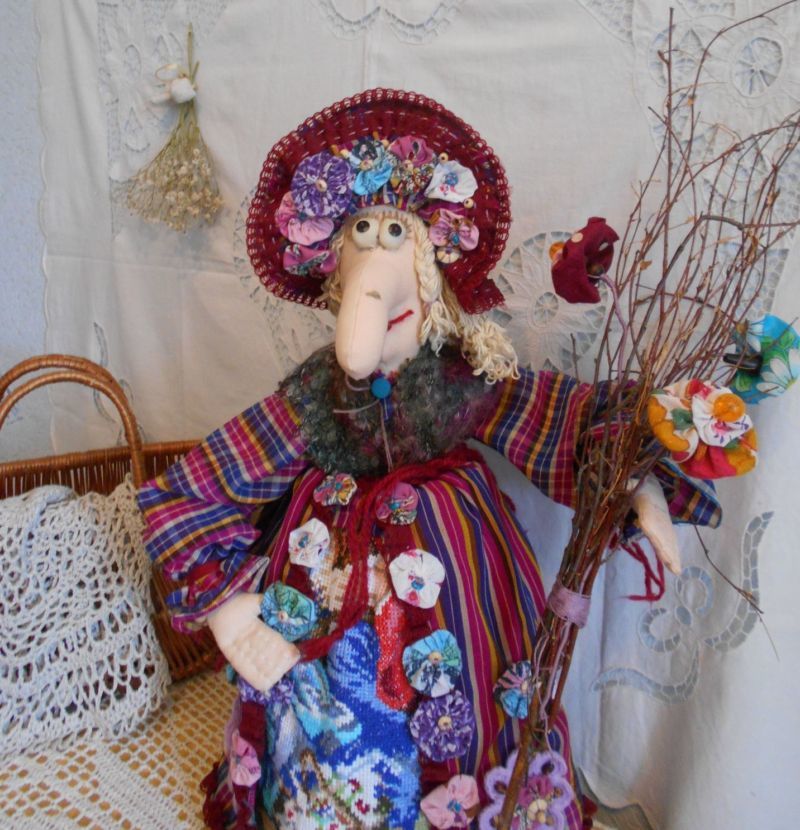
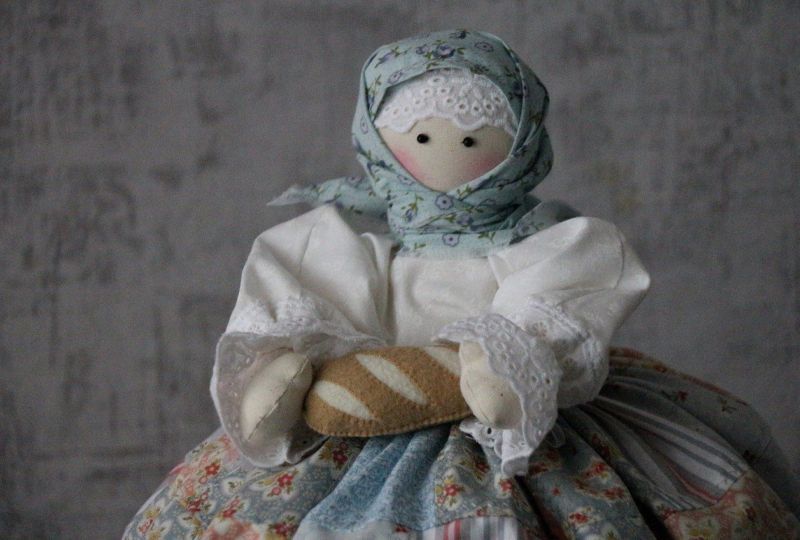
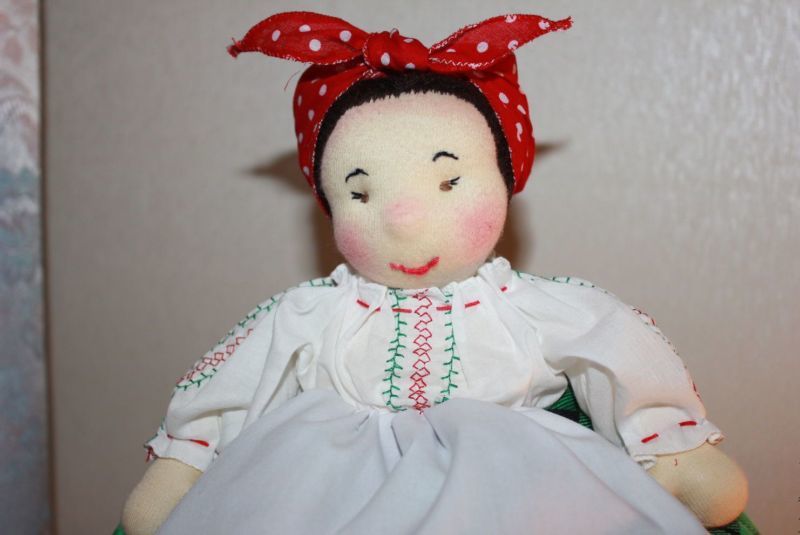

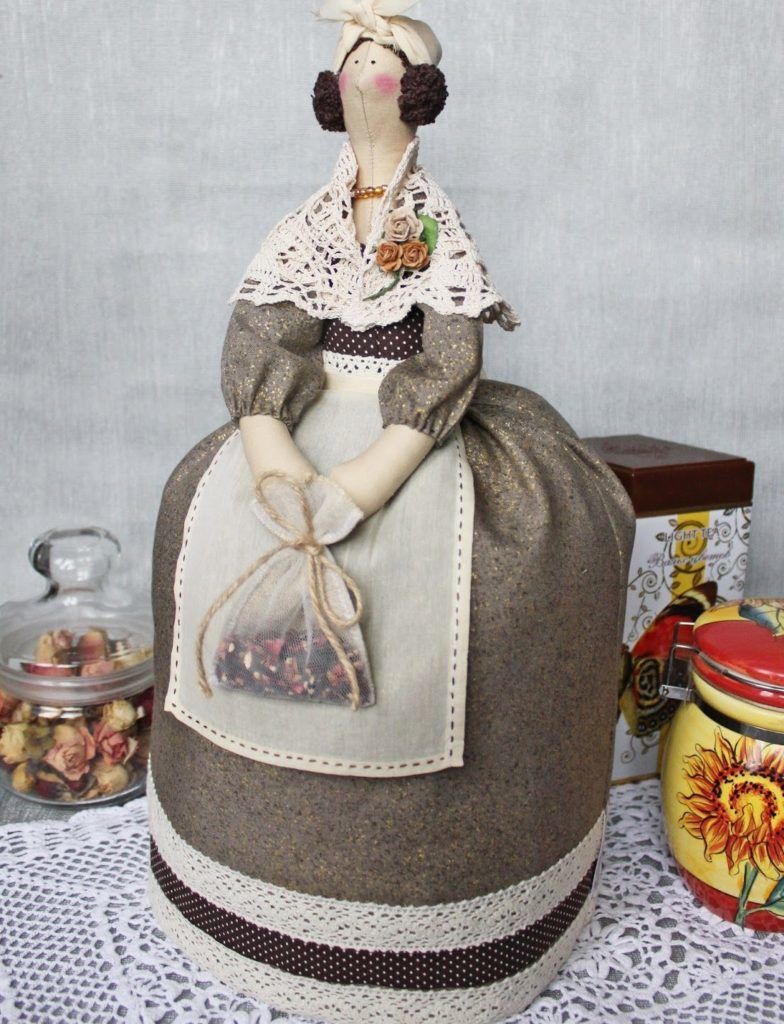

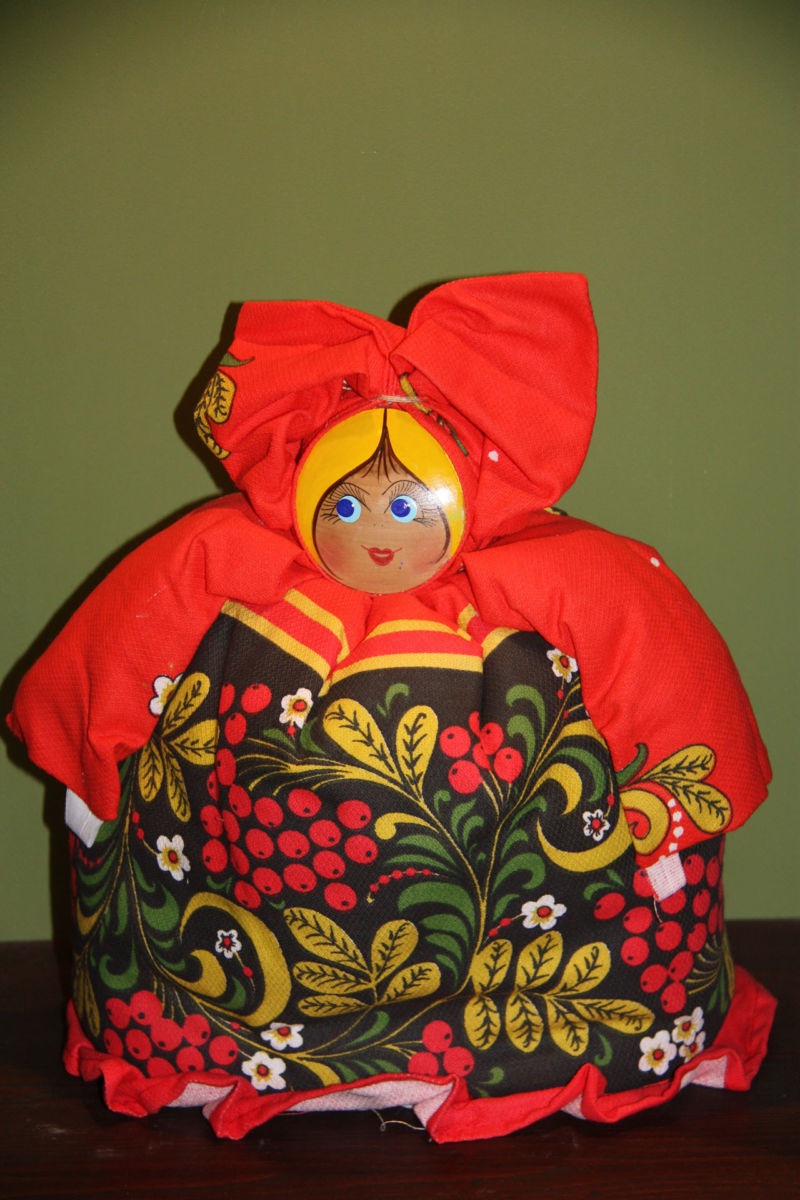
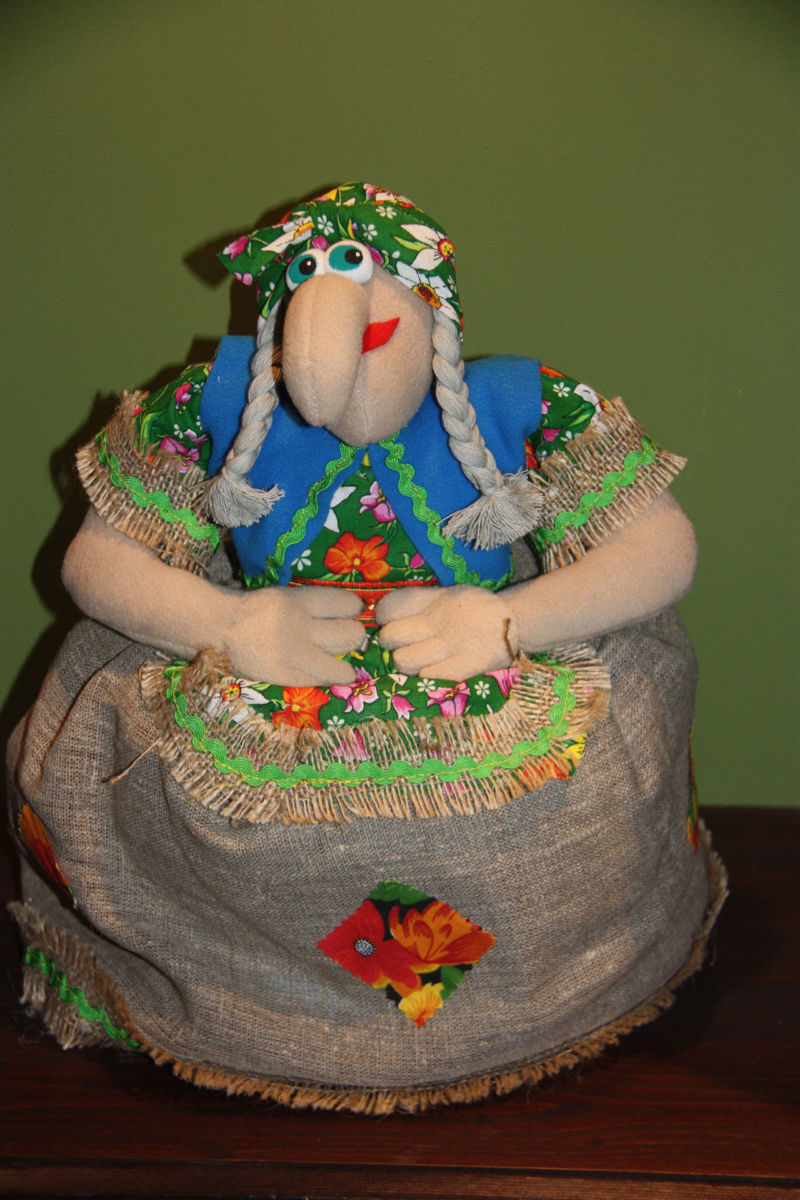

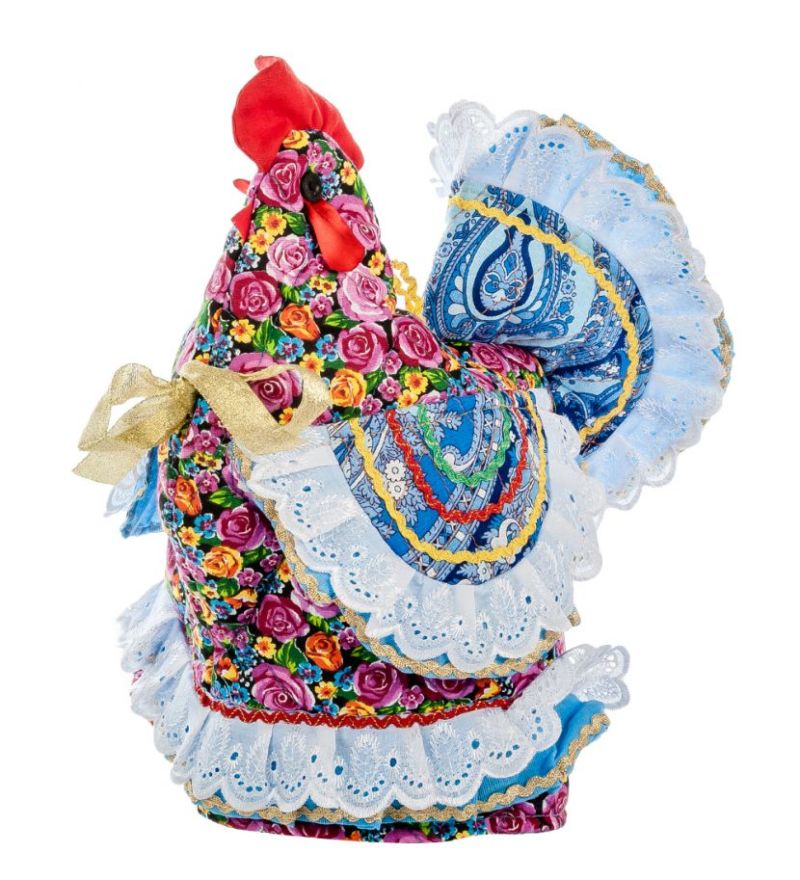
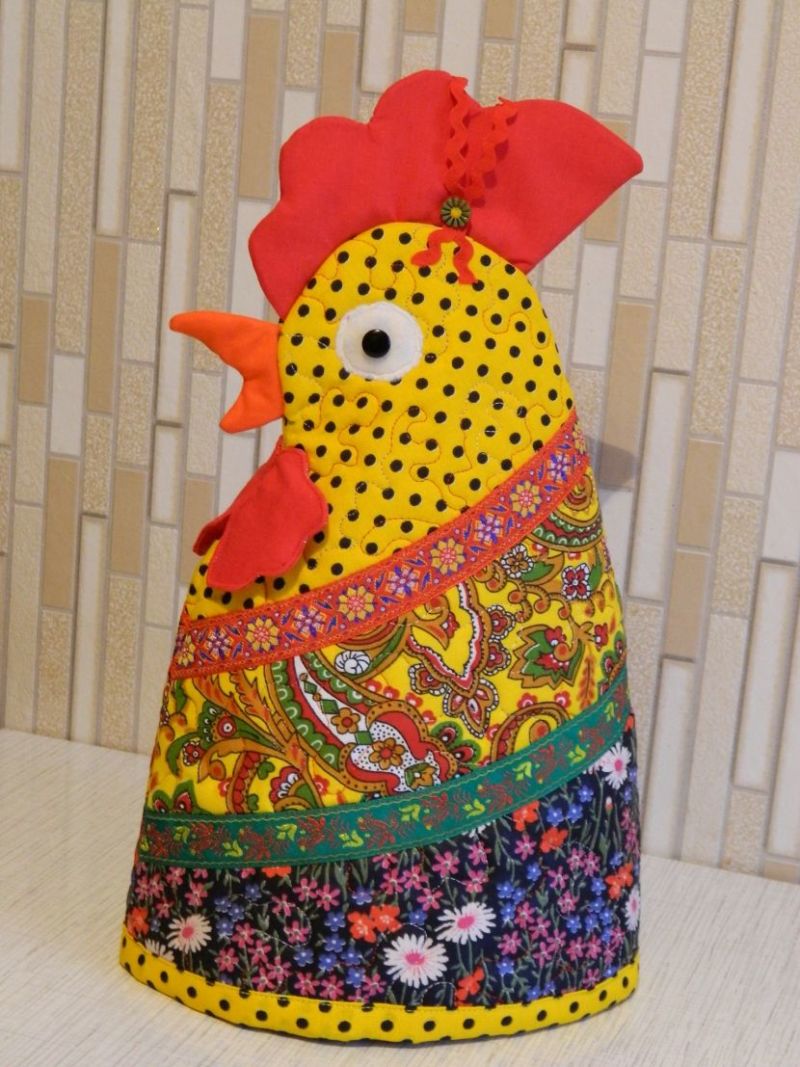
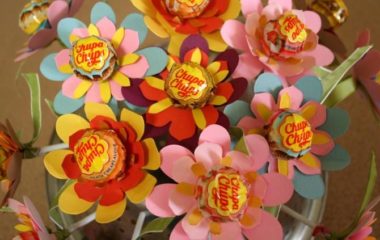
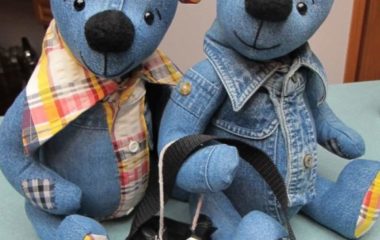


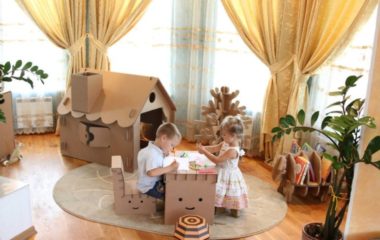

Thank you so much! Very cool! I got a positive "charge" of pleasure from watching it. I will make it!